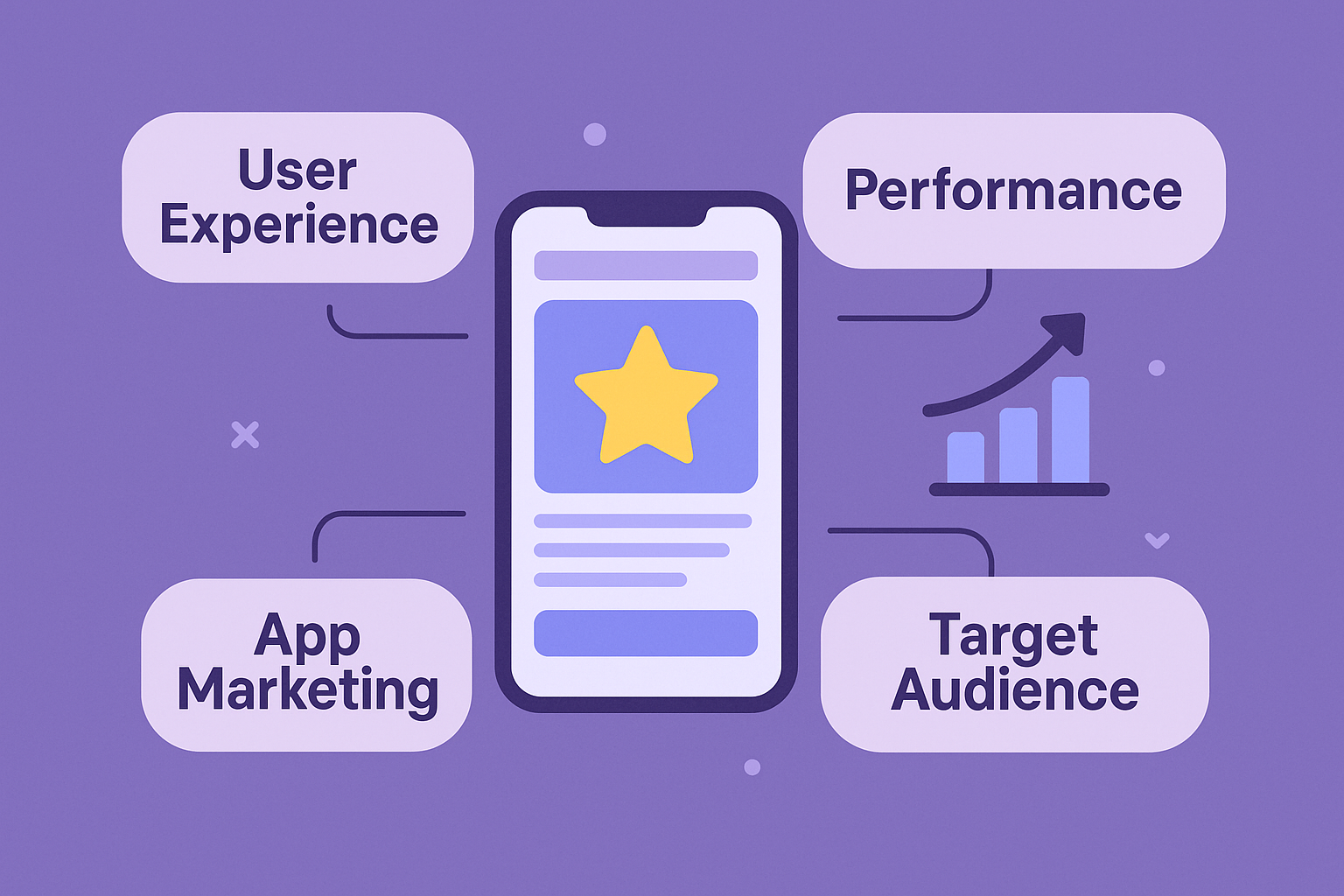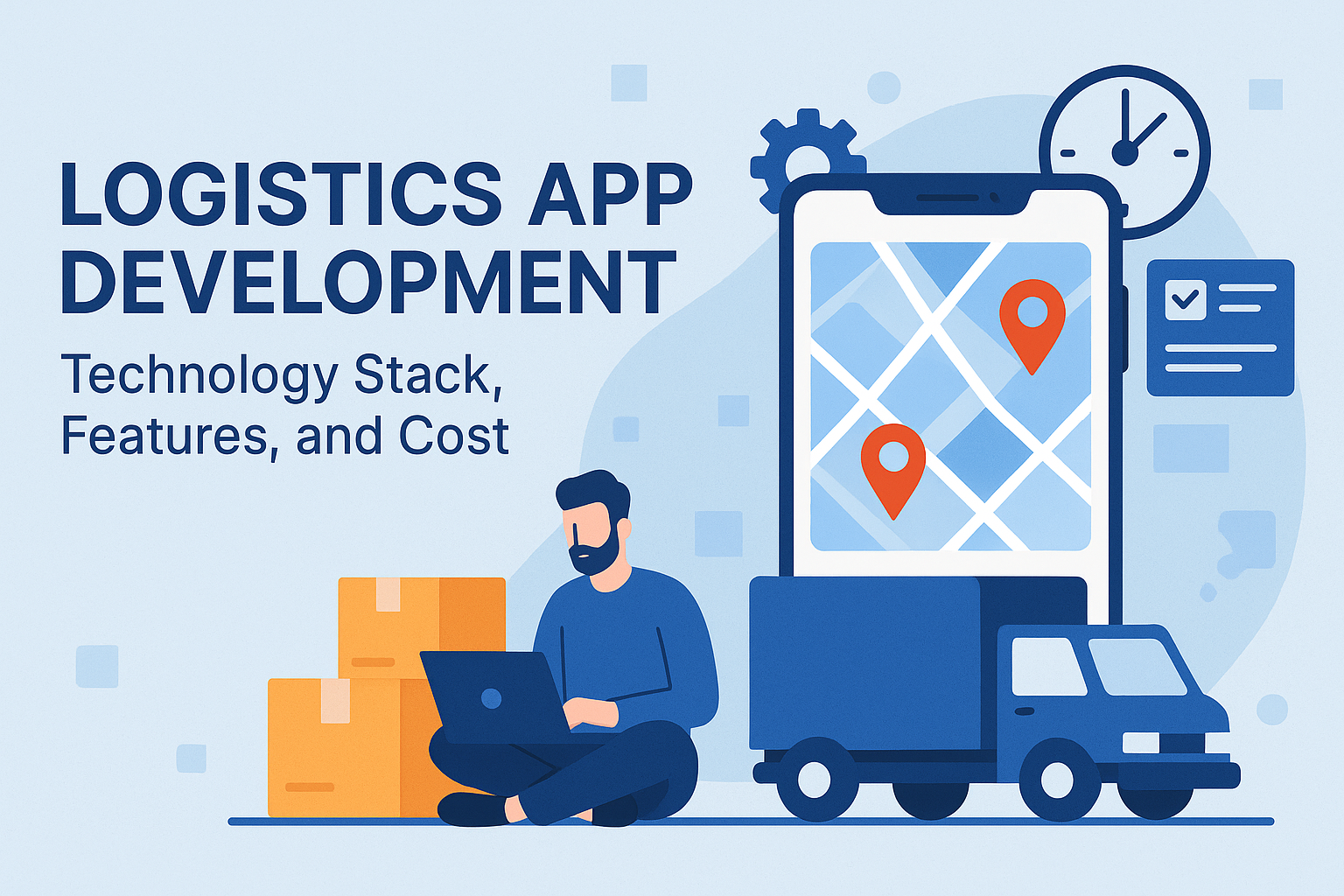- May 22, 2023
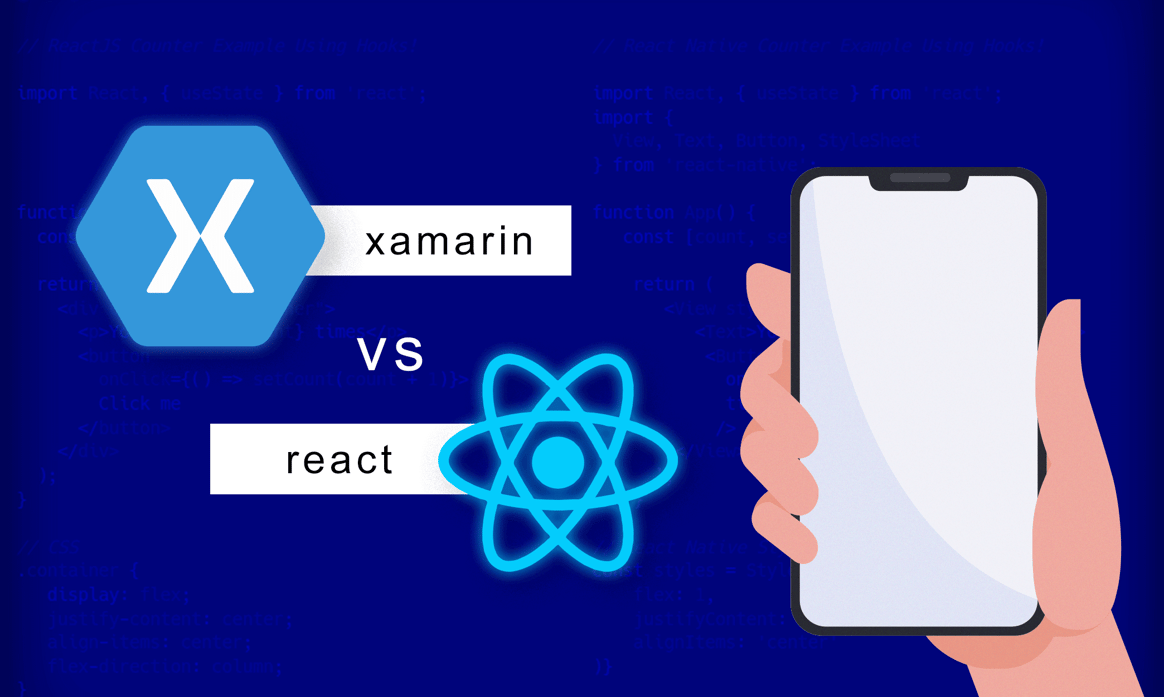
The creation of mobile apps has advanced significantly since the era of platform-specific apps. Developers now have a plethora of options for creating cross-platform apps, which not only save time and money but also streamline the development process. Two of the most popular cross-platform technologies that currently exist are Xamarin and React Native. While both platforms seem to be very similar in their approach to app development, there are some fundamental differences that developers need to be aware of before choosing the right platform for their mobile app.
In this blog post, we’ll provide an overview of Xamarin and React Native, the key features of each platform, the types of mobile applications each one is best suited for, and provide a detailed comparison of the two for a better understanding of which platform is ideal for your project.
What is Cross-Platform App Development?
Cross-platform app development is the practice of creating mobile apps that can be deployed on multiple platforms, including Apple and Android devices, without requiring significant changes to the underlying codebase. With cross-platform development, developers can create a single version of their app that can be run on different platforms, saving both time and money when compared to creating separate apps for each platform.
What is Xamarin?
Xamarin is a popular cross-platform technology that allows developers to build apps for all major mobile platforms, including iOS, Android, and Windows. It is an open-source platform that is supported by Microsoft and provides developers with several features that make it easy to write high-performance code with minimal effort. Xamarin is based on the .NET framework and C# programming language, providing developers with an efficient and modern way to build apps.
What is Xamarin Used for?
Xamarin is primarily used to build cross-platform native mobile applications that have a similar look and feel to their platform-specific counterparts. It provides developers with the ability to write C# code that targets all major platforms, which can be shared across different projects. Xamarin also allows for the development and deployment of apps using a single programming language, which simplifies maintenance and support requirements.
When to Use Xamarin for Mobile App Development?
1. Native User Experience: Xamarin empowers developers to create native apps that provide the same user experience as platform-specific apps.
2. Single Technology Stack: Xamarin allows developers to use a single technology stack for building apps across multiple platforms, cutting down on development costs and time.
3. Minimal Time to Market: Xamarin allows developers to build and deploy apps quickly. Once the codebase is written, the app can be deployed to all platforms in one go, saving time and avoiding potential delays.
4. Simplified Maintenance: Xamarin simplifies maintenance requirements, as there is only a single codebase for all platforms. Any bugs or updates can be applied once across all platforms, reducing the overall complexity involved in maintaining multiple apps.
5. Testing: Xamarin provides developers with several tools for testing, including automated unit testing and UI testing, making it easier to catch errors and ensure app quality.
6. Know Every Crash and Activity: Xamarin Insights provides real-time crash reporting and analytics, helping developers quickly identify and fix issues.
7. Support and Technical Backing by Microsoft: Xamarin is backed by Microsoft which ensures reliable support and future upgrades.
Xamarin-based Mobile Applications:
1. UPS Mobile App: Allows users to track packages easily.
2. BBC Good Food: A recipe app, allows users to search and save recipes, and create shopping lists.
3. Justgiving: A popular charity app that allows users to raise money for a chosen charity.
What is React Native?
React Native is an open-source framework developed by Facebook, providing developers with a way to build cross-platform mobile apps using the React JavaScript library. React Native is fast and efficient, and has a large community of developers supporting it. Developers may create code once and deploy it across various platforms with React Native App Development.
What is React Native Used for?
React Native is mainly used for building cross-platform mobile apps that are performant and share capabilities across platforms. It is ideal for developing apps that have complex user interfaces, such as social media apps or games. React Native‘s popularity also means that developers can tap into a rich and growing ecosystem of plugins and libraries for enhanced functionality.
When to Use React Native for App Development?
1. Custom Design: React Native enables developers to create custom designs and animations for mobile apps, giving them a unique look and feel.
2. Shareability between Mobile and Web Apps: With React Native, developers can share code between mobile and web apps, saving time and reducing overhead.
3. Maximum Code Reuse and Cost Saving: React Native’s code-sharing mechanism significantly reduces the amount of effort required to support multiple platforms, reducing overall development costs.
4. Strong Performance for Mobile Environments: React Native provides native performance on mobile devices, providing developers with the ability to create apps with a high level of performance.
5. The JavaScript Advantage:
React Native, as its name suggests, is based on JavaScript. JavaScript has been a popular programming language for years now, and it’s widely used in the web development community. One of the advantages of using JavaScript for mobile app development is that you can use the same codebase that is used for the web app.
This means that developers can quickly build mobile apps using existing web development knowledge, saving development time and effort. Plus, there are plenty of resources available that explain how to use JavaScript and React Native.
On the other hand, Xamarin uses C# as its primary language. While C# is a powerful language, it’s not as widely used as JavaScript in the web development community. This means that developers need to spend more time learning C# and the Xamarin development environment.
6. Integration with Native Application:
React Native allows developers to easily integrate native code with JavaScript. This offers a huge advantage for developers who need to use platform-specific features like camera and GPS. React Native has a flexible bridge system that lets you easily use native code in your app.
Xamarin also offers a bridge system, but it’s not as flexible as that of React Native. While Xamarin supports native integration, it has some limitations when it comes to interacting with the UI of the app.
7. Community-driven and Rich Ecosystem:
React Native has a strong community of developers, which means that there are a lot of resources available for developers. Whether you’re a seasoned developer or just starting, there are plenty of resources available to help you get started with React Native. Additionally, React Native has a lot of packages available in its ecosystem, which means that developers can easily extend its functionality.
Xamarin also has a good community of developers and resources available, albeit smaller than React Native. One of the disadvantages of Xamarin is that there aren’t as many packages available in its ecosystem as there are in the React Native ecosystem.
React Native-Based Mobile Applications:
Uber Eats:
Uber Eats is a food delivery service that is popular in many countries around the world. The app is built using React Native, which allows it to be developed and maintained by a small team. Uber Eats has a clean, modern interface that is easy to use, and it features many useful features like restaurant ratings and location-based search.
Bloomberg:
Bloomberg is a financial information and news platform that is widely used by investors and traders around the world. The Bloomberg app is built using React Native, which allows it to be quickly developed and updated. The app has a clean, modern design, and it features many useful features like real-time financial news and financial data analysis.
Walmart:
Walmart is one of the largest retailers in the world, and its app is built using React Native. The app features a simple, easy-to-use interface that allows users to shop for products, browse deals, and find store locations.
Comparison of Xamarin and React Native Side by Side:
React Native has the following advantages over Xamarin:
– React Native is based on JavaScript, which is widely used in the web development community.
– React Native offers native integration with ease.
– React Native has a larger and more active community of developers.
– React Native has a larger ecosystem of packages.
On the other hand, Xamarin has the following advantages over React Native:
– Xamarin offers a better performance and response time.
– Xamarin allows for more seamless integration with other Microsoft services.
– Xamarin offers better UI customization options.
How Hoff & Mazor Can Help You Create A Robust Cross-Platform Mobile App?
Hoff & Mazor is a leading Mobile App Development Company in Dubai that can help you create and launch cross-platform mobile apps. Our development team consists of experts who are proficient in both React Native and Xamarin. We work closely with you to understand your requirements, and we use our expertise to create custom mobile apps that are tailored to your business needs.
We follow a streamlined mobile app development process, which ensures that your mobile app is developed, tested, and launched in the most efficient way possible. Our team is experienced in creating mobile apps for different platforms, including iOS and Android.
- May 19, 2023

Are you tired of managing your real estate business with multiple spreadsheets and paper documents? Do you want to make your business more efficient and simplify operations? The solution to your problem lies in the development of Real Estate CRM software.
As the real estate industry continues to grow and become more competitive, it’s essential to have tools that can help you stay ahead of the game. CRM software designed specifically for real estate can provide you with the necessary tools to manage your contacts, properties, and transactions more efficiently.
However, not all CRM software is created equal. If you’re considering developing or purchasing a Real Estate CRM software, it’s crucial to understand the essential features it should have. In this article, we’ll explore the features that make for a top Real Estate CRM, allowing you to make the right choice for your business.
What is CRM in Real Estate?
CRM in real estate refers to a system used to manage customer interactions, automate sales, and streamline the sales process. This includes tasks such as lead generation, lead management, customer contact management, deal management, invoicing, billing, and communication. CRM goes beyond managing the sales process and extends to relationship management to help build and maintain positive relationships with clients.
A good CRM system will provide comprehensive insights into the sales process, including visualization tools to help track lead and deal progress. It will also provide the necessary data to make informed business decisions, as well as help automate, manage and streamline daily business tasks.
10 Features that Define an Effective CRM for Real Estate
1. Dashboard
A dashboard is a critical aspect of any CRM system. It gives an overview of the sales pipeline, the number of leads, deals, recent activities, and sales closures. A well-designed dashboard enables real estate professionals to have access to data that is essential in making informed business decisions.
2. Lead management page
An effective CRM for real estate should have a lead management page. It should allow the user to capture, track, sort, and categorize leads. This feature should provide an easy way to view the leads, track lead status, and add notes to each lead’s record.
3. Deal management page
Real estate deals involve multiple parties and require detailed information on the status of each deal. An effective CRM should have a deal management page where a user can view the name of the deal, the status, the documents required, the payment plan, and other vital information.
4. Contact management page
The contact management page should provide information on leads or contacts’ behavior, preferences, contact information, and other relevant data. A well-managed contact page should provide the user with easy access to all the information they need to communicate with a client or lead.
5. Project management page
A project management page helps agents to manage multiple real estate projects. It should provide an overview of the project, the number of units, the number of materials required, milestones, deadlines, and progress status.
6. Invoicing and Billing
An effective CRM should have an invoicing and billing section that allows users to generate and send invoices, and know which ones have been paid, and the time frames for invoicing.
7. Communication page
The communication page helps agents and brokers to track all forms of communication between the agency and clients. It should be linked to the contact management page that gives an overview of client preferences and their communication history with the agency.
8. Listing management page
The listing management page provides a comprehensive listing of properties that the agency has on the market, along with their status and ownership.
9. Notifications
In an effective CRM, notifications should be customizable to keep agents and brokers updated on any changes in the sales pipeline, leads, and deals.
10. Integrations
An effective CRM should provide integrations with other useful third-party software. This is essential for the seamless transfer of data between the CRM system and other software.
What Makes a Real Estate Company Need CRM?
Investing in CRM technology can transform a real estate company in many ways. Below are some benefits of implementing CRM technology in a real estate business;
1. Improved sales results
CRM can help you close more deals and reduce the time it takes to close a deal. By automating the sales process, it becomes less time-consuming, freeing up time for more sales interactions. Furthermore, effective communication management helps agents and brokers to tailor communication accordingly, which can result in a better conversion rate.
2. Better client management
CRM technology enables agents and brokers to deliver a better experience and interact with clients at the right time with the right message. This helps build and maintain strong relationships, ultimately leading to referrals and repeat business.
3. Enhanced data management
CRM technology is excellent for tracking data and analyzing customer activity. By monitoring customer interactions, agencies can identify areas of improvement, understand what potential clients are looking for, and optimize their sales strategy.
4. Increased productivity
Real estate CRM technology helps agents to manage time and prioritize activities easily. By automating the process, it eliminates time-consuming tasks, giving agents more time to concentrate on selling properties.
5. Sustainability
CRM technology is essential for the real estate industry’s sustainable growth. With increasing competition each year, implementing CRM technology ensures the agency stays up to date with the latest sales automation tools
30 Best Real Estate CRMs in 2023
- Zoho CRM – This CRM for real estate agents offers comprehensive features for lead management, sales tracking, and workflow automation, among others.
- RealtyJuggler – A complete real estate CRM with marketing tools, transaction management, lead capture, and follow-up capabilities.
- Hubspot CRM – This CRM is a freemium solution that offers a broad spectrum of features including lead tracking, email integration, and business insights.
- Contactually – This CRM for real estate agents boasts advanced automation tools for lead nurturing and increasing the chances of closing deals.
- Wise Agent – Offers intuitive features for lead management, automated marketing, and referral tracking.
- Salesforce CRM – Enterprise-grade CRM for real estate agents with advanced features for sales and marketing.
- Top Producer – An award-winning CRM system that integrates social media and email marketing, sales automation, and business insights.
- Follow-Up Boss – This CRM system is ideal for real estate agents of all levels, offering an intuitive interface for managing leads and closing deals.
- PropertyBase – Comprehensive real estate CRM with cutting-edge features such as marketing automation, lead generation, and lead nurturing.
- LionDesk – Another one of the industry’s top CRM solutions with features for lead management, text messaging, and 360-degree client view.
- Chime – A real estate platform with lead generation, IDX website builder, and transaction management capabilities.
- Realvolve – This CRM for real estate agents offers an interactive dashboard, customizable workflows, and advanced marketing automation.
- Pipedrive – An intuitive CRM solution that focuses on pipeline management, sales forecasting, and lead tracking.
- REthink – A comprehensive commercial and residential real estate CRM with tools for workflow automation, transaction management, and marketer insights.
- Infusionsoft – This all-in-one real estate CRM offers features for automation, lead tracking, and email marketing.
- ixact Contact – Comprehensive real estate CRM with features for lead nurturing, sales automation, and referral tracking.
- Agent Rise – An online platform that combines CRM, lead generation, and sales training for real estate agents.
- Zurmo CRM – A free, open-source CRM with enterprise-grade features for real estate agencies and agents.
- CINC – An all-in-one lead generation and CRM that offers advanced automation, lead nurturing, and listing syndication capabilities.
- Freshsales – A sales CRM focused on lead tracking, pipeline management, and business insights.
- VTiger – This open-source CRM platform offers analytics, automation, and sales force management functionalities for real estate agents.
- Apto – Commercial real estate CRM with features for managing lease deals, listings, and contacts.
- Copper – A cloud-based CRM offering contact management and automated data entry.
- BoomTown – Comprehensive online platform offering lead generation, CRM, and marketing automation tools.
- Redtail – CRM for financial advisors and real estate agents, with an intuitive interface and features for compliance.
- RealScout – A home search platform with integrated CRM capabilities for real estate agents.
- Placester – A digital marketing platform for real estate agents with features for lead management, email marketing, and IDX website builder.
- Avenue HQ – A cloud-based real estate CRM with lead capture and automated marketing capabilities.
- RealNex – Commercial real estate CRM with features for managing lease deals, listings, and contacts.
30. Propertyware – Comprehensive property management software with features for maintenance, leasing, and accounting
- May 13, 2023
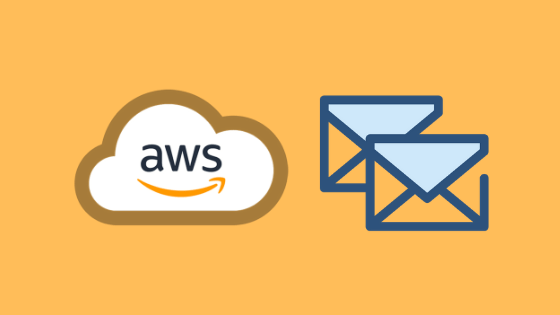
Amazon Simple Email Service (SES) is a popular bulk email service provider that businesses rely on to reach their customers. However, with recent changes in Amazon SES pricing, some companies are seeking alternatives that are more cost-effective. Are you in the same boat, looking for a more affordable option for your email marketing needs?
Email campaigns play a crucial role in the success of any business, but the cost of email marketing services can quickly add up. This is why many businesses are opting to switch to Amazon SES alternatives that provide the same features at a lower cost. Several Amazon SES alternatives are available in the market, but how do you know which one to choose?
In this blog, we delve into the realm of email delivery services, focusing on breaking free from the limitations of Amazon SES. We present a curated list of the top 10 alternatives that are revolutionizing the way businesses handle their email delivery in 2024. By exploring these alternatives, readers will discover innovative solutions that offer enhanced features, improved deliverability rates, and advanced functionalities. We examine the reasons behind seeking alternatives to Amazon SES and highlight the unique benefits and capabilities of each alternative. Join us on this journey as we uncover the next generation of email delivery services that are shaking up the industry in 2024.
SendGrid

When it comes to email marketing, one of the most important tools is a reliable email service provider. Amazon SES has been a popular choice for businesses, but there are other alternatives to consider. One such alternative is SendGrid.
SendGrid is a cloud-based email delivery platform that allows businesses to send transactional and marketing emails to their customers. It provides a user-friendly interface and promises high deliverability rates for emails.
Pros:
– Easy to use interface: SendGrid offers an intuitive dashboard that makes it easy for businesses to manage their email campaigns.
– High deliverability rates: The platform is known for its high deliverability rates, ensuring that emails reach their intended recipients.
– Email personalization: SendGrid offers advanced personalization options, including dynamic content and segmentation.
– Extensive integration options: SendGrid integrates with a wide range of apps and services like WordPress, Salesforce, and Shopify, among others.
– In-depth reporting: SendGrid provides detailed reports on email campaigns, including open and click rates, unsubscribes, and bounces.
Cons:
– Limited automation: SendGrid offers basic automation features, but businesses looking for more advanced automation may need to look elsewhere.
– Pricing structure: While the platform offers a free plan with limited features, it can be expensive for high-volume senders.
– Limited email templates: SendGrid’s email template library is limited compared to other email service providers.
Pricing:
SendGrid offers a free plan that allows businesses to send up to 100 emails per day. Premier starts at $19.95/m Pro · Starts at $89.95/m and Custom Pricing available.
Rating:
Overall, SendGrid is a reliable alternative to Amazon SES for businesses looking for a user-friendly email service provider with high deliverability rates. Its extensive integration options, detailed reporting, and email personalization features make it a popular choice for businesses of all sizes. However, its pricing structure and limited automation options may be a drawback for some businesses. Overall, SendGrid receives a rating of 4 out of 5 on G2.
Mailgun

Mailgun is a cloud-based email delivery platform designed to help businesses improve the deliverability of their transactional emails. It allows users to send, receive, and track email messages in a simplified manner. Mailgun offers features like email validations, real-time analytics, and a dashboard for monitoring and managing email campaigns. Here’s a closer look at its pros, cons, pricing, and ratings:
Pros:
– Mailgun has a user-friendly interface that allows users to easily set up and manage their email campaigns.
– It offers real-time email tracking and analytics that provide insight into email engagement metrics such as open and click rates.
– Mailgun is highly scalable and can handle large-scale email campaigns with ease.
– The platform includes email validation services that help prevent users from sending emails to invalid email addresses.
– Mailgun provides comprehensive email deliverability and spam analysis reports to help users improve their email engagement and outreach.
Cons:
– Mailgun does not provide a robust email marketing automation feature like some other email solutions on the market.
– Its pricing can be steep for businesses with high email-sending volumes.
Pricing:
Mailgun offers a free plan that includes 5,000 email sends per month. Paid plans start at $35 per month and end at $90/month.
Rating:
Overall, Mailgun has a 4.3 out of 5-star rating on G2 and is highly regarded for its simplicity, reliability, and deliverability. Users particularly appreciate its real-time analytics and dashboard features. However, some have noted that the pricing can be a bit high and the lack of advanced automation features may require additional integrations with other tools.
SparkPost
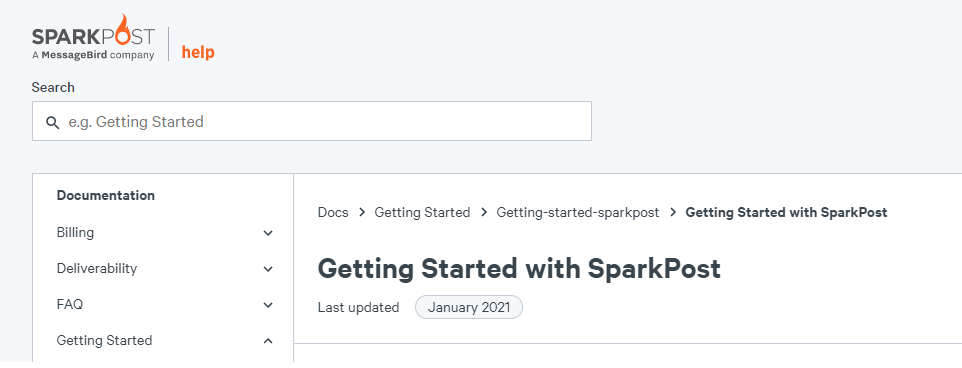
SparkPost is an email delivery service provider that is aimed at businesses and online marketers. It is an alternative to Amazon SES and has been steadily gaining popularity in recent years. SparkPost’s main focus is on email deliverability and provides advanced features to create, send and track email campaigns.
Pros:
– Deliverability: SparkPost uses a combination of advanced algorithms and human talent to ensure that emails are delivered to the recipient’s inbox and not marked as spam.
– 24/7 support: SparkPost offers 24/7 support to its customers with a dedicated customer support team.
– API integration: SparkPost integrates with other tools to create an all-encompassing email campaign.
– High-volume email: SparkPost can handle high-volume email.
– Real-time analysis: SparkPost offers real-time analysis of your email campaigns, providing insights on email success and recipients’ actions.
Cons:
– Limited automation: SparkPost’s automation is limited compared to its competitors, which may impact the overall effectiveness of its email campaigns.
– Pricing: Pricing for SparkPost is based on volume, and for small businesses, it could be more expensive than other email delivery services.
– Complex setup process: Setting up SparkPost can be difficult for novice users, and it requires technical knowledge to configure the API and other features.
Pricing:
SparkPost offers a free plan for 100 emails per day, a Pay-as-you-go plan for 5,000 emails for $20, and a Premier plan starting at $99/month, which includes 50,000 email sends.
Rating:
SparkPost is rated 3.7/5 on Capterra. SparkPost’s deliverability, advanced features, and user support make it a popular alternative to Amazon SES. However, its pricing could be a disadvantage for small businesses, and its limited automation compared to its competitors could impact its overall effectiveness. Overall, for mid to large-sized businesses, SparkPost is a solid option for email delivery services.
Postmark
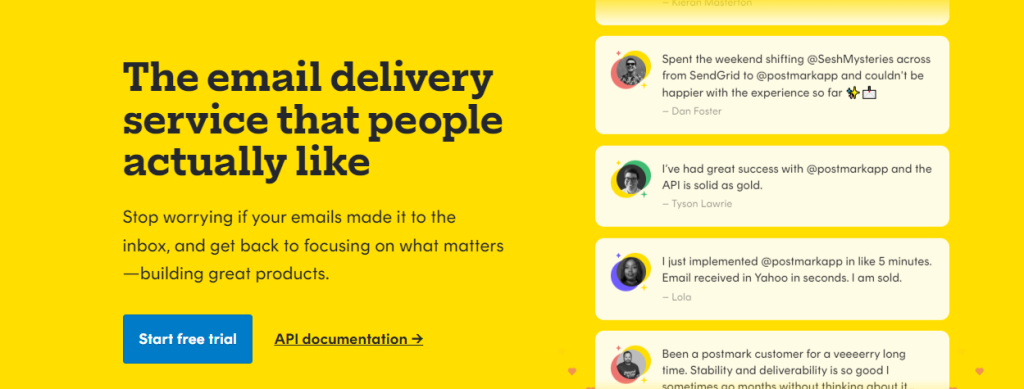
Postmark is an email service provider that offers reliable email delivery to help businesses reach their customers’ inboxes. It guarantees high uptime rates and fast delivery times for transactional emails, making it an ideal alternative to Amazon SES.
Pros:
– High deliverability rates – Postmark has a reputation for delivering emails to inboxes instead of getting caught in spam filters.
– User-friendly interface – The email creation and send process is simple and straightforward.
– Fast delivery times – Postmark has a quick turnaround time for email delivery, ensuring that clients’ messages are delivered promptly.
– Detailed analytics – The tool provides a dashboard to track and analyze email delivery, bounces, and engagement statistics.
– Secure – High-level data encryption, authentication, and authorization protocols protect sensitive data and prevent attacks.
Cons:
– Limited pricing plans – Postmark only offers three pricing plans that limit the number of emails sent per month.
– Expensive – Compared to other email delivery options, Postmark can be costly for businesses with a high volume of emails sent.
– No free plan available – Postmark does not offer a free version, making it less accessible for small businesses or startups.
Pricing:
Postmark offers three pricing plans based on the number of emails sent each month, including a Basic plan for 10,000 emails, Plus plan for 50,000 emails, and a Premium plan for 125,000 emails. The Basic plan starts at $15/month, while the Plus plan starts at $50/month. The Premium plan’s pricing starts at $250/month.
Rating:
Postmark has a 4.6-star rating out of 5 on G2, with most users agreeing that it provides accurate email delivery tracking, comprehensive reporting, and user-friendly features. However, some users expressed dissatisfaction with the pricing structure and the limited number of integrations that Postmark offers. Overall, Postmark is an excellent email delivery service for businesses that prioritize high deliverability rates and quick email delivery times.
Sendinblue

Sendinblue is an email marketing and automation tool that offers versatile features, making it a suitable alternative to Amazon SES. It provides an easy-to-use platform, allowing users to create and send newsletters, transactional emails, and SMS campaigns.
Pros:
– Sendinblue offers advanced automation features and a visual workflow builder that allows users to create complex automated campaigns.
– The platform enables users to send transactional emails, which are triggered by user actions, such as password resets, welcome emails, and order confirmations.
– Sendinblue comes with A/B testing features to optimize campaigns, testing different email variations, and select the best-performing ones.
– The cost of Sendinblue is considerably lower than Amazon SES. Their free plan includes up to 300 emails per day, and paid plans start at just $25/month.
– Sendinblue offers multi-language support, with a user interface that supports several languages.
Cons:
– Unlike Amazon SES, Sendinblue doesn’t appear to offer dedicated IP addresses.
– Some users have noted that the platform’s reporting features could use improvement compared to other email marketing tools.
Pricing:
Sendinblue offers four pricing plans: Free, Lite, Premium, and Enterprise. The Free plan includes up to 300 emails per day, while the Lite plan starts at $25/month (or $20/month when paid annually) and includes up to 10,000 emails per month. The Premium plan starts at $65/month (or $52/month when paid annually) and includes up to 20,000 emails per month. Enterprise app development plans are available upon request for high-volume senders.
Rating:
Sendinblue has a 4.5 out of 5 rating on G2, with users praising its ease of use, customer support, and automation features. The platform has also received positive reviews for their competitive pricing and range of features.
Mailchimp

Mailchimp is a widely popular email marketing platform that has been around for over 15 years. It is known for its user-friendly interface and a variety of features that make it a great tool for businesses of any size. In this review, we’ll take a closer look at Mailchimp’s features, pricing, and customer ratings, and compare it to Amazon SES (Simple Email Service) to see how it stacks up as an alternative.
Pros:
– Mailchimp allows users to create customizable email templates and campaigns easily, enabling them to tailor their messages to their audience.
– The platform provides automated email marketing tools, integrations with hundreds of other apps, and robust analytics that enable businesses to track results and optimize their campaigns.
– Mailchimp is also equipped with A/B testing features, enabling businesses to test different versions of their emails to see which one resonates more with their audience.
– The platform’s drag-and-drop interface makes it incredibly easy to use, ensuring that businesses can create beautiful and effective email campaigns without any technical skills.
Cons:
– Compared to other email marketing platforms, Mailchimp can be a bit pricey, especially when businesses are dealing with larger email lists.
– The platform can be limited in customization options beyond email templates, making it difficult to build more complex email automations.
Pricing:
Mailchimp’s pricing is based on the number of subscribers businesses have, with plans starting at $13 per month for 500 subscribers and going up to $350 per month for 50,000 subscribers. It also offers a pay-as-you-go option for those who send fewer emails.
Rating:
Mailchimp has received a rating of 4.5 with nearly 20,000 users on Capterra. The platform’s user-friendly interface, excellent automation features, and advanced analytics are often cited as some of its most significant benefits. However, some users have noted that the platform can be difficult to navigate, and its pricing structure can be a bit steep for businesses on a tighter budget.
Overall, if a business is looking for a user-friendly, feature-rich email marketing platform, Mailchimp is a great alternative to Amazon SES. With its robust automation capabilities, easily customizable templates, and A/B testing features, it’s no surprise that Mailchimp has become one of the most popular email marketing solutions today.
Elastic Email
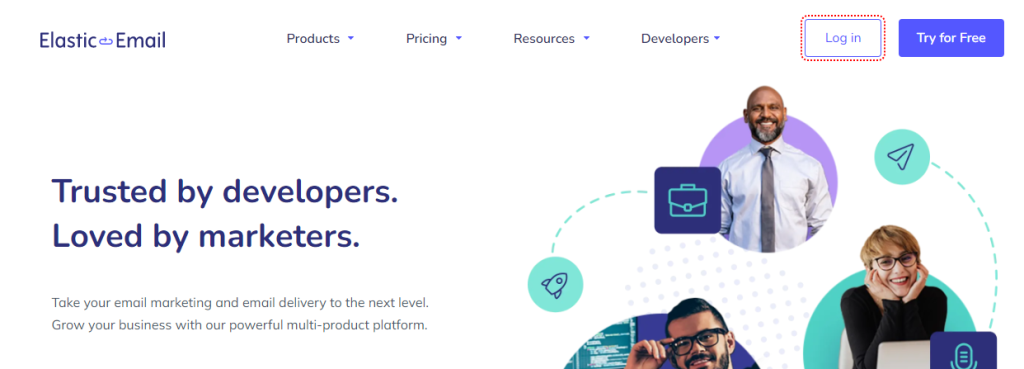
Elastic Email is an email platform that provides businesses with a reliable and cost-effective way to send bulk emails. It offers a number of useful features such as email tracking, marketing automation, and segmentation, making it a popular alternative to Amazon SES.
One of the advantages of Elastic Email is its affordable pricing plans. Unlike some of its competitors, it offers pay-as-you-go plans, as well as monthly subscriptions with no contracts. This allows businesses to scale their email campaigns according to their needs without breaking the bank.
Another advantage of Elastic Email is its easy-to-use interface. It provides a user-friendly dashboard where businesses can manage their email campaigns, monitor their email metrics, and conduct A/B testing on their email designs.
However, one downside of Elastic Email is its deliverability rates. Some users have reported that their emails have been flagged as spam or blocked by certain ISPs. This may be due to the company’s policies on email verification, which require users to verify their email lists before sending emails.
Pros:
– Affordable pricing plans
– Easy-to-use interface
– Email tracking, marketing automation, and segmentation features
Cons:
– Deliverability rates may be lower compared to other providers
– Email verification policies may cause delays in sending emails
Pricing:
Elastic Email offers both pay-as-you-go and monthly subscription plans. The pay-as-you-go plan starts at $0.09 per 1000 emails, while the monthly subscription plan starts at $10 per month for up to 5000 subscribers.
Rating:
Elastic Email has a rating of 4.3 stars out of 5 on Capterra, based on user reviews. Users have praised the company’s affordability, feature set, and customer support, while noting that deliverability rates can be improved. Overall, it is a solid alternative to Amazon SES for businesses looking for a budget-friendly email platform.
Overall, Elastic Email has received positive reviews with a rating of 3.6 out of 5 stars on Capterra. The platform offers an excellent balance of affordability and features and is a great alternative to Amazon SES. However, it may not be the best option for businesses requiring advanced segmentation or in-depth reporting tools.
Pepipost
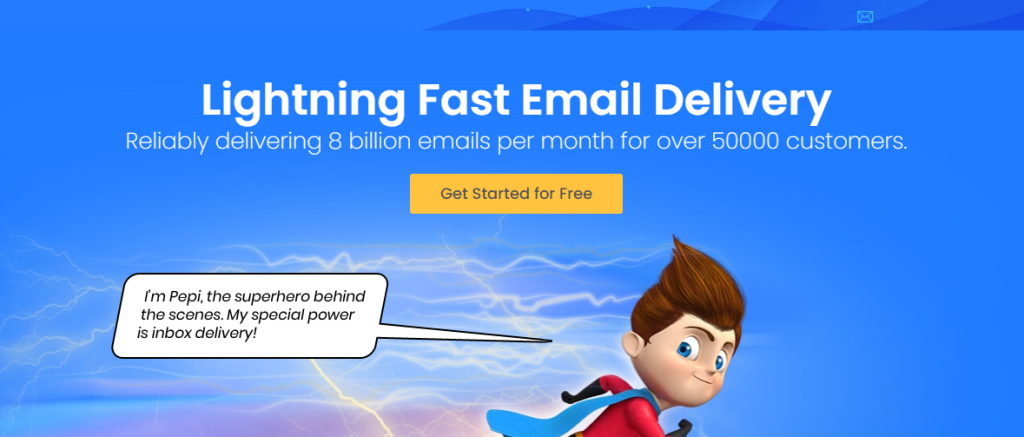
Pepipost is an email delivery service that offers a reliable and cost-effective alternative to Amazon SES. It is designed for businesses of all sizes and is known for its easy-to-use platform and various advanced features.
Pros:
– Pepipost has an impressive delivery rate of up to 98%, ensuring that your emails reach your subscribers’ inbox, not their spam folder.
– It has a user-friendly interface that is easy to navigate, even for beginners.
– The platform offers various advanced features, including automation, real-time analytics, and A/B testing, allowing you to optimize your email campaigns for maximum engagement.
– Pepipost provides excellent customer support, with helpful agents available 24/7 to answer your questions and resolve any issues.
Cons:
– Some users have reported occasional delays in email delivery, particularly during peak usage periods.
– Pepipost’s pricing plans are based on the number of emails sent, which may not be suitable for businesses with very high email volumes.
Pricing:
Pepipost offers a range of pricing plans to suit different email volumes and needs. They start at $349 up to $899..
Rating:
Pepipost has a rating of 4.3/5 on Capterra, with users praising its easy-to-use platform, excellent customer support, and high delivery rates. Overall, Pepipost is an excellent alternative to Amazon SES that offers great value for money and advanced features that are perfect for businesses of all sizes.
SMTP2GO

SMTP2GO is an email delivery platform that helps businesses send email campaigns with high delivery rates and real-time tracking. It is an alternative to Amazon SES that also provides reliable email delivery services for businesses that require reliable email sending to their customers.
Pros:
– SMTP2GO offers high email delivery rates, ensuring that emails sent from this platform are less likely to be marked as spam, resulting in a higher number of emails reaching their intended destinations.
– The platform offers real-time email tracking, allowing users to monitor the success of their email campaigns and gain insights into recipient behavior.
– SMTP2GO provides an API for integration with third-party applications such as CRMs and e-commerce platforms.
– It offers a user-friendly interface with easy-to-use tools that allow marketers to create custom email campaigns quickly.
– SMTP2GO offers excellent customer support, with a responsive team that can assist users with their queries instantly.
Cons:
– SMTP2GO has limited integrations compared to other email delivery platforms like Amazon SES.
– The pricing for SMTP2GO might be slightly higher compared to other email delivery platforms like SendGrid.
Pricing:
SMTP2GO offers various subscription plans suitable for different business sizes and requirements. The prices start at $15 per month and go up to $1045 per month. For businesses that send more than 2 million emails, SMTP2GO provides custom pricing.
Rating:
SMTP2GO is rated highly by users, with an average rating of 4.9 out of 5 on Trustpilot. Users praise the platform for its excellent delivery rates, user-friendly interface, and responsive customer service. The only downside mentioned by some users is the pricing, which is considered slightly higher than other email delivery platforms. However, the added value of SMTP2GO’s additional features such as email tracking and integration capabilities are considered worth the extra cost. Overall, SMTP2GO is a reliable alternative to Amazon SES for businesses that require a robust email delivery platform to send email campaigns.
Mailjet
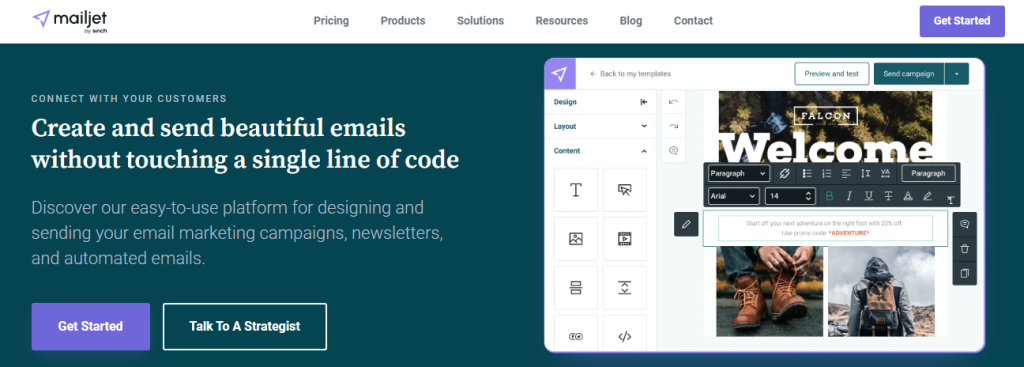
As more and more businesses rely on email marketing for customer outreach, email service providers are in high demand. While Amazon SES is a popular choice, there are other alternatives available and one such email service provider is Mailjet. With its array of features, Mailjet is a reliable option for marketers and businesses seeking a high deliverability rate and powerful tools for building email campaigns.
Pros:
– High deliverability rate: Mailjet boasts of delivering up to 100% inbox placement, that ensures every email sent will reach the recipient’s inbox.
– Easy-to-use drag-and-drop email builder: The email builder allows users to create professional-looking email templates with a simple drag-and-drop interface.
– Segmentation and Personalization: Users can segment their email list into groups and personalize each email for maximum engagement.
– Real-time Collaboration: The platform allows multiple users to work on emails at the same time, which makes it easier for teams to collaborate.
– API support: Mailjet’s API enables users to integrate the email service provider with other services.
Cons:
– Pricing: Mailjet’s pricing can get expensive for businesses with large subscriber lists.
– Limited support: Mailjet provides limited customer support options, including an FAQ page and email support.
Pricing:
Mailjet offers a free plan that allows users to send up to 200 emails per day, paid plans start from $15/month and go up to $25/month.
Overall Rating:
- Mailjet has received a 3.9 rating on G2. When it comes to email service providers, Mailjet is a great alternative to Amazon SES. With its easy-to-use email builder, high deliverability rate, and competitive pricing, it’s a great option for businesses of all sizes. However, users with large subscriber lists might find Mailjet’s pricing expensive. With limited support options, some businesses may find it challenging to resolve issues efficiently. Overall, Mailjet scores high on reliability, features, and price.
Conclusion
The landscape of email delivery services is evolving rapidly, and businesses are seeking alternatives to Amazon SES to meet their growing needs. The top 10 alternatives we explored in this blog represent a shift towards more innovative and advanced solutions in 2024. By breaking free from the limitations of Amazon SES, businesses can discover new possibilities for enhanced deliverability, feature-rich platforms, and improved email marketing strategies. It’s crucial for businesses to stay informed about these alternatives and evaluate them based on their unique requirements. Embracing the changing dynamics of email delivery can pave the way for more effective communication, higher engagement, and ultimately, greater success in reaching customers’ inboxes.
- May 12, 2023
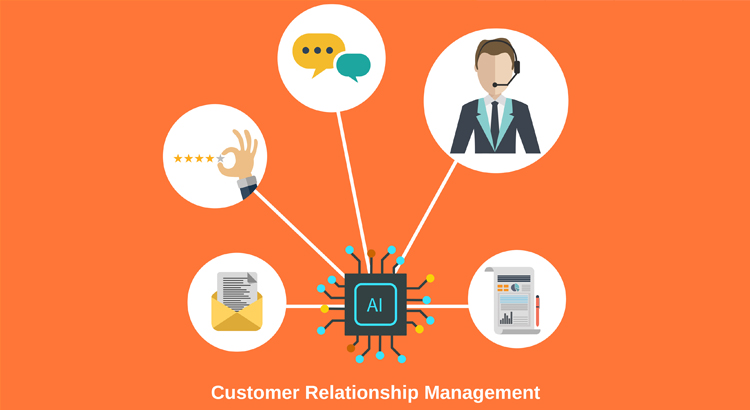
How often do we hear people say ‘customer is king’? It’s not just a popular phrase – it’s the reality of how businesses should operate. Companies have been using customer relationship management (CRM) tools for a long time to manage their customer interactions and improve the overall customer experience. However, the rise of artificial intelligence (AI) has revolutionized the way businesses approach CRM.
Artificial Intelligence (AI) is gaining more attention and becoming an increasingly popular technology in many industries. One area where AI can be impactful is in Customer Relationship Management (CRM). In recent years, CRM has become a fundamental aspect of many businesses, as it helps companies connect, manage, and maintain their relationships with customers as well as acquire new ones. AI has the potential to transform the way businesses interact with their customers, and it can have positive impacts on several areas, including analyzing sales calls, improving data acquisition and organization, customer satisfaction and confidence, follow-up with leads, automation of operations of the service desk, and acting as a consultant. Enhance CRM with Leadzen.ai‘s B2B lead generation Solutions
In this article, we will explore the incredible impact of AI on CRM and how it can help businesses improve customer interactions, reduce operational costs, and drive revenue growth. We’ll dive into some of the key ways AI is already being used in CRM, and how it’s poised to continue transforming the way companies approach customer relationship management in the future.
Artificial Intelligence in Business
Integrating AI in business processes is becoming more popular, as the technology improves and becomes more accessible. AI technology has already had an impact on many areas of business, including supply chain, logistics, and finance. It has changed the way businesses operate, allowing them to make better decisions, automate processes, and improve efficiency.
AI in CRM
CRM is about the management of customer interactions with a business. It’s a way to keep track of every interaction between a customer and a business, from the first contact to the final purchase. The goal of CRM is to build and maintain relationships with both existing and potential customers. And AI has already impacted CRM in several ways.
The Role of AI in CRM
One of the reasons why AI is becoming more popular in CRM is that it can help businesses analyze customer data. AI tools for businesses can help identify patterns and trends in customer behavior, as well as improve data accuracy and organization.
AI can also help businesses interact with customers in a more personalized way. With the help of machine learning and big data analytics, businesses can create personalized marketing campaigns and provide specific product recommendations based on customer behavior and interaction.
Benefits of Integrating AI into CRM
1. Improved Data Acquisition and Organization
One of the primary benefits of integrating AI into CRM is the ability to improve data acquisition and organization. AI can automatically collect, analyze, and categorize customer data, making it easier for businesses to understand their customers better. By making use of real-time engagement data, businesses can make informed decisions and provide more personalized customer service.
2. Analyze Sales Calls
AI technology can also be used to analyze sales calls, monitor customer interactions, and identify any gaps in the process. This can help businesses get insights into their sales teams’ performance, identify any areas for improvement, and provide better training for their employees.
3. Customer Satisfaction and Confidence
AI can also help businesses improve customer satisfaction and confidence. By providing personalized marketing campaigns and product recommendations based on customer behavior and interaction, businesses can make the customer feel more valued. AI can also analyse customer feedback and complaints, making it easier for businesses to respond quickly and offer solutions.
4. Saves Money and Time
By automating processes, AI can save businesses both time and money. For example, AI can help automate routine tasks such as scheduling appointments, making follow-up calls, and sending personalized emails to customers. AI can help automate routine tasks such as scheduling appointments, making follow-up calls, and sending personalized emails to customers. When integrated with your CRM email campaign, this automation can significantly enhance customer engagement and conversion rates. This frees up employees to focus on other important tasks and helps to increase productivity.
5. Follow Up with Leads
Another benefit of AI in CRM is the ability to follow up with leads quickly and effectively. By automating the lead generation process, AI can help businesses reach out to potential customers and follow up with them until they are ready to buy.
Also by using popups, you can significantly improve your chances of acquiring new customers, making the process much easier and more effective. Employing popup plugin enables you to create this effective tool with ease.
6. Automation of Operations of the Service Desk
AI can also automate the operations of the service desk. For example, by incorporating chatbots, businesses can provide round-the-clock customer service and automate routine tasks such as booking appointments and scheduling follow-up calls.
7. Acts as a Consultant
AI can also act as a consultant by providing valuable insights into customer behavior and identifying any areas for improvement. AI can analyze data from different sources, including social media, customer reviews, and purchasing behavior, to provide an advanced understanding of customer trends.
Some Thoughts on AI and the Future of CRM
1. Virtual Assistant
One of the most intriguing areas where AI can transform CRM is the development of virtual assistants. Virtual assistants can provide personalized support, automate routine tasks, and deliver a high level of customer service. A virtual assistant can also help businesses access customer data quickly and easily.
2. Automated Data Capturing
AI can also help businesses capture and analyze data more efficiently. By automating data capturing, businesses can obtain accurate data in real-time, making it easier to monitor customer behavior and make informed decisions.
User Retention
Another way AI can impact CRM is through user retention. AI can help businesses create personalized marketing campaigns and monitor customer feedback, making it easier to keep customers engaged and loyal.
Sales Enablement
AI can also help businesses improve their sales process. By using AI technology to analyze customer data and provide insights on customer behaviour, businesses can target their sales efforts more precisely.
The Significance of AI in Mobile Apps for eLearning
eLearning mobile apps are becoming increasingly popular, and AI technology is playing a significant role in their development. AI technology is being used to create personalized learning experiences, where the app can tailor the content and lessons to the user’s needs and learning style.
AI technology is also being used in language learning apps, where it can help improve conversational skills, vocabulary, and pronunciation. It can provide feedback on grammar, vocabulary, and pronunciation, making the learning experience more effective and engaging.
AI technology can also be used in educational mobile apps to provide students with instant feedback on their work. By using natural language processing and machine learning algorithms, these apps can evaluate the student’s work and provide feedback that is relevant and specific to their needs.
The Growing Importance of Artificial Intelligence
AI technology is becoming increasingly prominent in many areas of our lives, from healthcare to finance, transportation, and entertainment. AI is already being used to improve patient care, diagnose diseases, and develop new treatments.
In the finance industry, AI technology is being used to detect fraudulent transactions and improve investment decisions. In transportation, AI technology is being used to optimize routes, improve safety, and reduce environmental impact.
AI technology is also being used in the entertainment industry to create personalized content and improve user engagement. By analyzing user data such as search history, watch history, and user ratings, AI algorithms can recommend content that is tailored to the user’s interests and preferences.
Understanding the Increasing Popularity of Artificial Intelligence
Artificial intelligence is becoming popular because it offers a range of benefits over traditional technologies. AI algorithms can analyze large amounts of data quickly and accurately, making it possible to detect patterns and insights that would be impossible to identify manually.
AI technology can also automate repetitive tasks and improve efficiency, allowing organizations to save time and money. AI algorithms can learn and adapt to new situations, making them more flexible and versatile than traditional technologies.
Additionally, AI technology can provide personalized experiences, making it possible to tailor content and services to the user’s needs and preferences.
Top AI Technologies for Mobile App Development
There are several AI technologies that can be used in mobile app development, including:
1. Natural language processing (NLP)
NLP technology can be used to develop voice assistants and chatbots that can understand and respond to user queries in natural language. This technology can provide a more personalized and engaging experience for users.
2. Predictive analytics
Predictive analytics can be used to analyze user data and provide personalized recommendations for content, products, and services. This technology can improve user engagement and increase customer retention.
3. Facial recognition
Facial recognition technology can be used in mobile app development to provide advanced security features or for augmented reality experiences. This technology can improve the user experience and make mobile apps more engaging and immersive.
4. Machine learning
Machine learning algorithms can be used to analyze large amounts of data and provide personalized recommendations and insights. This technology can improve efficiency, reduce costs, and increase customer satisfaction.
5. Chatbots
Chatbots can be used to provide personalized customer service and support. By using AI algorithms, chatbots can understand and respond to user queries in natural language, providing a more engaging and efficient experience for users.
Wrap Up
In conclusion, the integration of artificial intelligence in customer relationship supplier management has revolutionized the way businesses interact with their customers and market themselves. AI technology has enabled companies to predict consumer buying behaviors, personalize customer experiences, and improve overall communication with customers through chatbots and virtual assistants. As AI continues to evolve, so does the potential for even greater advancements in customer relationship management. As businesses strive to stay ahead of the competition, incorporating AI into their CRM strategy is becoming increasingly essential for creating a truly personalized customer experience and enhancing customer loyalty.
- May 11, 2023
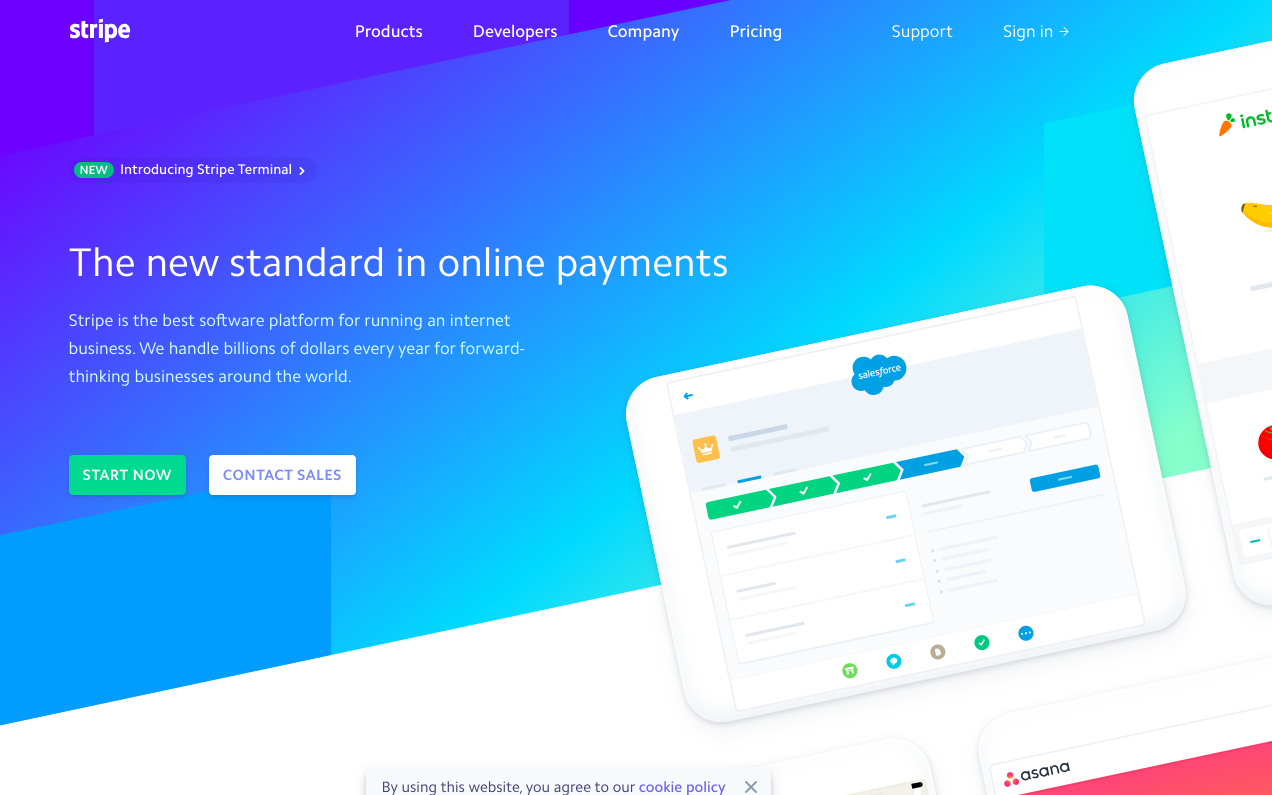
As the world of online business continues to grow, the need for payment processing solutions has become more significant. Stripe has been one of the most reliable players in the field for quite some time, offering convenience and reliability to its users. However, it’s always good to explore your options and see if there are better alternatives available.
Are you tired of using Stripe for your payment processing needs? Looking for some alternatives that can offer the same features and functionalities, but with a little something extra? Then, you’re in luck because we’ve tested and reviewed some of the top Stripe alternatives just for you! In this article, we’ll take a look at their pros and cons, compare them with Stripe, and help you make an informed decision on which one to choose. So, let’s dive right in and explore these exciting options together!
Square payments
Square is a platform for processing payments that give businesses of all sizes a variety of products and services. One of the most well-known companies in the world for processing payments is Square. Square has become the go-to choose for businesses looking to streamline their payment processing due to its user-friendly platform, innovative features, and user-friendly interface.
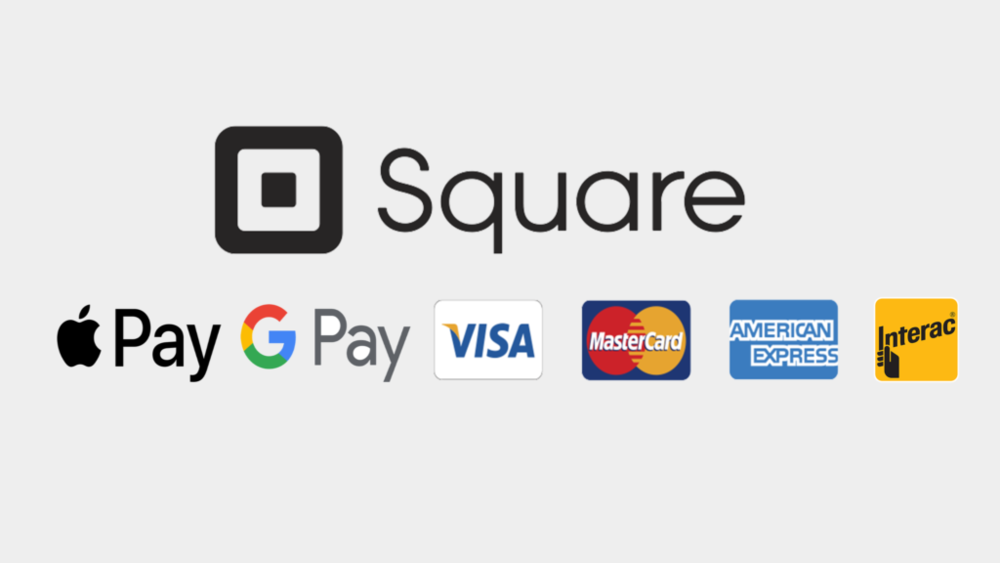
Pros
- Square payment platform is user-friendly and easy to navigate, making it simple for businesses to start accepting payments quickly.
- Square provides a variety of additional products and services in addition to processing payments, such as invoicing, payroll, and analytics.
- For businesses of all sizes and requirements, Square offers a variety of pricing options, including flat-rate and custom pricing.
- With a dedicated team of representatives available to assist businesses with any questions or issues they may have, Square has a reputation for excellent customer support.
- Transactions are typically processed within a few seconds thanks to the quick and dependable payment processing system offered by Square.
Cons
- Despite the fact that Square provides a variety of pricing options, its platform is less customizable than that of some other payment processing companies, which may be a disadvantage for businesses that have more specific requirements.
- While Square’s payment processing fees are competitive, some of its additional features, such as invoicing, come with additional fees that may add up for businesses.
- Despite the fact that Square’s customer service is generally excellent, the company does not provide phone support, which may be a disadvantage for some businesses.
- The sudden deactivation of accounts or the freezing of funds by some businesses can be a major problem for cash flow and operations.
Pricing
Square offers a range of pricing options to suit businesses of all sizes and needs. Square charges a flat rate of 2.6% + $0.10 per transaction for in-person payments, and 2.9% + $0.30 per transaction for online payments. There are no monthly fees or long-term contracts. Square also offers additional services such as payroll and invoicing, which come with their own pricing structure.
Rating
Square is a reliable and easy-to-use payment processing platform that is reasonable for small to medium-sized organizations. It is a popular choice for businesses due to its transparent pricing and numerous payment options. However, some users may be concerned about its limited customer support and occasional account stability issues. On G2, Square receives a rating of 4.6 stars, with many customers praising its straightforward pricing and ease of use.
GoCardless
GoCardless is a UK-based online payment platform that permits organizations to gather repeating payments from clients and gather direct charge payments through the website and deals with all through our dashboard. It is an international payments network that enables businesses to accept and settle payments in any currency from any location. The company aims to automate the payment process, allowing businesses to concentrate on their core operations.

After our experts have looked over the platform, here are some of the pros and cons of using GoCardless for your business, as well as its pricing and rating.
Pros
- GoCardless is simple to use and easy to set up, requiring little technical expertise.
- It computerizes the whole payment process, including collecting, reconciling, and overseeing payments. This reduces errors and saves businesses time.
- GoCardless is a great option for global businesses because it accepts payments in multiple currencies.
- GoCardless has competitive pricing and no monthly or setup costs. Each transaction incurs a small fee from the business.
Cons
- GoCardless only accepts direct debit payments, which might not be the best option for every company.
- GoCardless doesn’t have mobile app and poor display in a mobile browser.
- Businesses with specific branding or design requirements may find the platform’s limited customization options to be a disadvantage.
Pricing
There are three pricing options for GoCardless: Pro, Plus, and Standard The Standard plan charges 1% per transaction, up to a maximum of £2, with no monthly fees. The Plus and Pro plans have lower transaction fees, but higher monthly fees.
Rating
Customers have given GoCardless positive reviews, with many praising the platform’s ease of use and affordability. G2 gives the company a rating of 4.8 out of 5 stars. However, some customers have complained about issues with the platform’s payout times and customer support.
Amazon pay for business
Amazon Pay is a payment processing service. Organizations use it to accept online payments on their websites. This service makes it simple for countless clients worldwide to pay for items and services using their Amazon account information. The purchasing experience is familiar to customers because they already know and trust the brands offering this service.
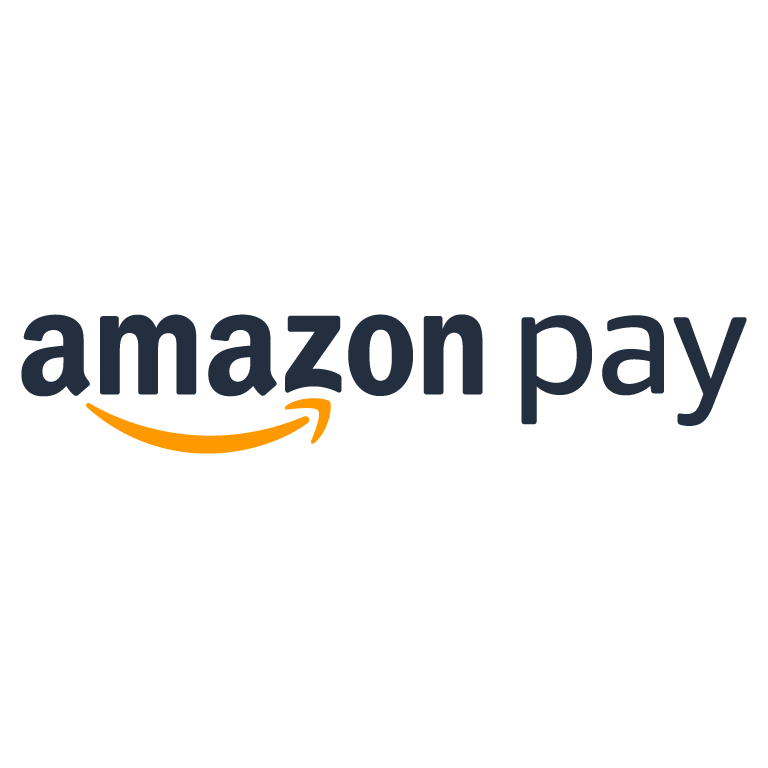
Our team of experts have gone through amazon pay payment platform and have point out some pros and cons of it also the pricing and rating.
Pros
- If you already use Amazon Web Services, integrating Amazon Pay for Business into your website is a simple process.
- Amazon Pay is PCI DSS compliant and employs cutting-edge fraud detection technology, ensuring safe transactions for both the business and the customer.
- Numerous clients as of now have an Amazon account and are know all about the checkout cycle, which can prompt expanded transformations.
- we can helpfully take care of our bills, re-energize cell phones, book travel tickets
cons
- The fact that Amazon Pay for Business only currently accepts payments in a limited number of currencies can be a disadvantage for global businesses.
- The expenses for utilizing Amazon Pay for Business can be higher than other payment processing services, which can influence a business’ primary concern.
- Amazon Pay’s customer support has not always been prompt or helpful, as some businesses have stated.
Pricing
Amazon Pay for Business charges a processing fee of 2.9% + $0.30 per transaction. There are no setup fees or monthly fees.
Rating
On G2, user reviews have given Amazon Pay for Business a rating of 4.5 out of 5 stars. While some businesses have been pleased with the service, others have complained about payment issues, user interface design, and customer service.
Venmo
Venmo is a peer-to-peer mobile payment app that allows users to send and receive money for the sale of goods and services from customers. A business profile makes it simple for customers to find and pay you on Venmo, whether you’re mowing lawns, selling one-of-a-kind haircuts, or selling handmade planters at a craft fair.

Our professional team has reviewed the Venmo platform along with pricing, rating and has some pros and cons of it.
Pros
- Venmo is a popular choice among young adults who want to split the cost of shared expenses because it lets users connect with friends and view their transactions.
- With a straightforward interface that enables users to send and receive money with just a few taps, it is user-friendly and intuitive.
- Encryption and two-factor authentication are used to safeguard financial and personal information on Venmo.
- Venmo is a convenient way to pay for goods and services because it lets users transfer money immediately.
Cons
- Venmo only supports peer-to-peer transactions and has limited merchant support.
- transactions are public by default, which can be a concern for users who value their privacy.
- Venmo is just accessible in the US, which can be a disadvantage for clients who regularly travel abroad.
- You need to pay some fees for some services
Pricing
Venmo is free to use for standard bank transfers and debit card transactions. However, the app charges a 1% fee for instant transfers and a 3% fee for credit card transactions.
Rating
On G2, Venmo has received 4.5 out of 5 stars. The app’s ease of use, social integration, and security features are well-received by users, despite some complaints about the fees and lack of merchant support. In general, Venmo is a well-liked and simple choice for mobile peer-to-peer payments, particularly among younger users.
Adyen
Adyen is a payment gateway that aims to provide businesses with a wide range of payment options, solutions for preventing fraud, and unified commerce. Businesses can accept payments from customers via online, mobile, and in-store channels.
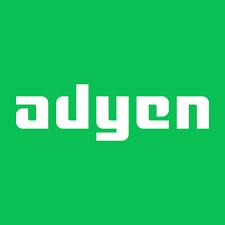
our team will provide an overview of Adyen’s features, pricing, pros and cons, and rating based on user reviews.
Pros
- Adyen provides a single payment platform that accepts a wide variety of payment options, including alternative payment methods, e-wallets, major credit cards, and bank transfers.
- Adyen makes it possible for businesses to handle online, mobile, and in-store payments from a single platform.
- Adyen offers a range of fraud prevention tools, such as real-time risk analysis, 3D Secure, and tokenization.
- this platform provides businesses with detailed analytics and reporting tools to help them track payment performance and customer behavior.
- They provide customizable payment pages that enable businesses to provide customers with a streamlined payment experience.
Cons
- Adyen’s pricing can be expensive for small businesses, as it charges a fixed fee per transaction as well as a percentage of the transaction amount.
- Customer service at Adyen can be slow to respond to questions and problems.
- The interface is the worst there could ever be
Pricing
Adyen charges a fixed fee for each transaction, which varies by payment method and location. Adyen also charges a percentage of the total amount of the transaction, which also varies depending on the method of payment utilized.
Rating
Adyen has a rating of 3.3 stars out of 5 based on user reviews. Client’s acclaim Adyen for its extensive variety of installment strategies, misrepresentation avoidance devices, and investigation and revealing elements. Adyen’s pricing can be expensive for small businesses, according to some users, and its customer support takes a long time to respond to questions and problems.
Shift4
Shift4 is a company that processes payments and offers various services to businesses of all sizes.Point-of-sale systems, POS transactions, mobile payment options, and online payment processing are among the company’s payment options. Shift4 powers billions of exchanges yearly for countless organizations in basically every industry.
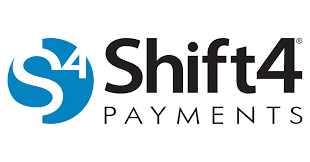
This is a summary of Shift4’s advantages and disadvantages, pricing, and evaluation by our analysts.
Pros
- Shift4 provides a variety of payment processing options, from point-of-sale (POS) systems to mobile payments, so businesses can select the one that best suits their requirements.
- With a 99.99% uptime guarantee, the company’s payment processing system is designed to be quick and dependable.
- To protect customer data, Shift4’s robust security features include tokenization and end-to-end encryption.
- The organization offers a set-up of revealing devices that can assist organizations with following their installment movement and distinguish patterns.
Cons
- The organization’s client service can be challenging to reach, for certain clients detailing significant delays and trouble settling issues.
- Pricing for Shift4 can be somewhat opaque, with fees and charges varying depending on the payment method selected by a company.
- Although Shift4 provides a variety of payment options, some clients have complained that the company’s point-of-sale (POS) systems can be challenging to set up and use.
Pricing
Pricing for Shift4 varies based on a company’s choice of payment method. The prices for the company’s POS systems range from $29 to $199 per month, depending on the plan. Shift4 charges a transaction fee of 2.9% plus 30 cents per transaction for processing mobile and online payments.
Rating
Shift4 receives positive ratings from customers and industry experts. The company has an rating of 3.6 out of 5 on G2. However, some customers have reported difficulty with customer support and pricing transparency, so it’s important to carefully evaluate Shift4’s offerings before choosing the company as a payment processing partner.
Card connects
CardConnect is a payment gateway that provides secure payment processing solutions to businesses of all sizes. It offers a range of features, including payment acceptance, processing, and settlement, as well as fraud protection, chargeback management, and reporting tools.
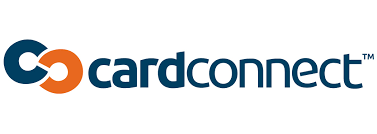
we will take a closer look at CardConnect and its pros and cons, pricing, and rating.
Pros
- This offers a user-friendly interface that makes it easy for businesses to accept payments online or in-store.
- The processing of payments through CardConnect is quick and effective, with funds typically being deposited within 24 to 48 hours.
- Their customer support team is available 24/7 and is known for its helpful and responsive service.
- CardConnect offers chargeback management services, helping businesses prevent and resolve chargeback disputes.
- Competitively rates are much better than other platforms
cons
- CardConnect’s pricing can be higher than that of some of its rivals, and it may charge extra for certain services and features.
- CardConnect’s payment processing system has been the subject of technical issues from some customers, which can result in delays and lost sales.
- Inaccurate billing and difficulty resolving billing issues with CardConnect have been reported by a few customers.
- They aren’t organized related to the documentations
Pricing
CardConnect offers customized pricing plans based on each business’s needs and transaction volume. The company charges a per-transaction fee $0.0195, as well as additional fees for certain features and services, such as fraud protection, chargeback management, and reporting tools. Businesses can contact CardConnect for a customized pricing quote.
Rating
On G2, 19 reviews give CardConnect a rating of 2.6 out of 5 stars. Although the company’s user-friendly interface, quick payment processing, and excellent customer support are praised, some customers have reported billing and technical issues. In general, CardConnect is a dependable payment gateway that provides a variety of services and features to assist businesses in processing payments safely and preventing fraud.
BirdEye
BirdEye is an all-in-one reputation management platform that helps businesses manage their online reputation, improve their customer experience, and drive growth. It offers a range of features that help businesses collect and manage customer feedback, monitor their online reviews, and engage with their customers.
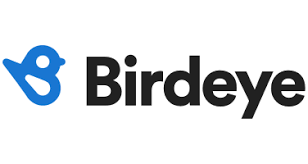
Our specialized team has deeply researched on this platform and came up with some pros, cons, pricing and rating.
Pros
- BirdEye offers an easy-to-use dashboard that makes it simple to screen and deal with your online reputation.
- You will be able to respond to customer feedback in a timely manner thanks to the platform’s real-time alerts for new reviews.
- Surveys and messaging tools are two of BirdEye’s many features that can be used by businesses to collect and manage customer feedback.
- Your average rating, review volume, and sentiment analysis are all part of the comprehensive reporting suite that BirdEye provides.
Cons
- Users who aren’t familiar with reputation management may find the platform’s reporting features to be too much for them to handle.
- Slow response times and unhelpful responses have been cited by some users as problems with customer support.
- The survey feature in BirdEye may not be as customizable as some users would like, making it less useful for some businesses or industries.
- BirdEye should integrate with others platforms also instead of google and facebook.
Pricing
BirdEye provides a variety of pricing options to accommodate businesses of all sizes. For small businesses, its plans start at $299 per month, with custom pricing available for larger businesses. A variety of features, including reputation reporting, customer feedback management, and review monitoring, are included in each plan.
Rating
Overall, BirdEye got a rating of 4.8 out of 5 on G2 from users. BirdEye is a top choice for businesses looking to improve their online reputation and drive growth. As it offers multiple features and help businesses to grow.
Deels
Deel is the all-in-one HR platform for global teams It meets the requirements remote work best practices. It gives businesses resources and tools to help them manage and pay remote workers, as well as comply with local taxes and regulations. Through Deel’s cutting-edge self-serve interface, employees, managers, and leaders may update withdrawal information, visualize team structure, monitor overall payroll expenses, and carry out dozens of other operations.
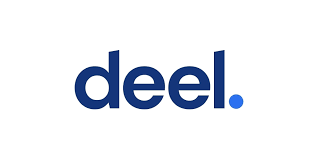
Our team has reviewed Deel’s advantages and disadvantages, pricing, and rating are all broken down below.
Pros
- The Deel platform is straightforward and simple to use, with step-by-by-step instructions and helpful hints.
- Deel makes it simple to employ and oversee workers, including contract creation to payment handling in one spot.
- Additionally, this platform offers direction on tax and employment regulations in a variety of nations, assisting businesses in remaining compliant and avoiding legal issues.
- In order to meet the requirements of workers and businesses alike, Deel provides a variety of payment options, including PayPal, bank transfers, and Payoneer.
- Deel has a responsive and accommodating client service group that is accessible by means of email, talk, or telephone.
Cons
- Compared to some of its rivals, Deel does not integrate with as many other platforms, which may be a disadvantage for businesses with more complex requirements.
- Deel’s feature set is relatively basic compared to some other remote work platforms, so businesses that require more advanced functionality may need to look elsewhere.
- Deel provides businesses with a variety of payment options, but it does not permit them to customize payment schedules as much as some other platforms do.
- this platform may not be accessible in all countries, which can be restricting for organizations and specialists with a worldwide presence. Additionally, Deel’s fees may be higher than those of other payment platforms, which may be a problem for individuals with limited financial resources.
Pricing
Deel offers two pricing plans: Hire contractors in 150+ countries without worrying about payroll or compliance for $49 USD per contract per month. Hire full-time employees without having to set up a legal entity in a new country starting from $599 USD per month.
Rating
Deel is a strong choice for organizations that need assistance with overseeing and paying remote workers. Its foundation is easy to understand and its consistency help as a champion component. Be that as it may, its restricted combinations and elements may not be adequate for bigger or more intricate organizations. On G2, Deel receives an average rating of 4.6 stars from reviewers.
Freshbooks
FreshBooks is an accounting software that helps freelancers and small businesses manage their finances, keep their books organized, and make them look professional. With its cloud-based stage, clients can undoubtedly get to their monetary information whenever and anyplace. The product gives elements, for example, invoicing, time following, cost management, and task the board.
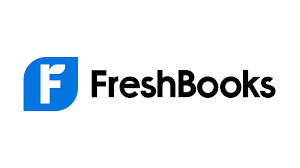
we will take a closer look at FreshBooks, including its pros and cons, pricing, and rating.
Pros
- The user-friendly interface of FreshBooks makes it simple to navigate and manage their finances. It is ideal for freelancers and small businesses that are unfamiliar with accounting software due to its straightforward design.
- this platform provides users with customizable invoice templates and automatic payment reminders. It also allows users to accept online payments from clients, making the payment process more convenient.
- The amount of time spent on projects and tasks can be tracked by users. They are able to accurately bill customers thanks to this feature, which also ensures that they are paid for the work they have done.
- Users can manage their finances and other business operations in one place thanks to FreshBooks’ ability to integrate with popular business tools like PayPal, Shopify, and Stripe.
Cons
- FreshBooks is intended for freelancers and small businesses, it may not include all of the features that larger businesses require. For instance, it does not provide purchase orders or inventory management.
- Although FreshBooks offers invoice templates that can be changed, users may find that there are only a few ways to change them.
- FreshBooks provides basic financial reports, but it may not have the depth of reporting that some businesses require.
- Its bit expensive than other invoicing software
Pricing
FreshBooks offers a range of pricing plans, depending on the number of clients and features required. The plans start from $8.50 per month for up to 5 clients and go up to $22.50 per month for up to an unlimited number of clients.
Rating
Users have given FreshBooks positive feedback, giving it a 4.5 out of 5 rating on G2. Clients acclaim its easy-to-understand interface, invoicing, and time-following highlights. Nonetheless, a few clients have noticed that it might not have every one of the elements that bigger organizations require.
Conclusion
In conclusion, There are numerous alternatives to Stripe that have been tested and proven to be effective for businesses and individuals who want to process payments online. While Stripe may be popular for its ease of use and flexibility of payment options, each of these alternatives offers unique benefits that may better suit particular businesses’ needs. It’s important to carefully consider factors such as transaction fees, recurring payments, security, and customer support before deciding which payment processor to use. By doing so, businesses can ensure that their online payment processing is efficient, secure, and tailored to meet their specific needs. Explore various tax strategies for optimizing your business’s financial management.
Also Read:
Top 10 Alternatives To Wordtune That You Should Try In 2024 – Reviewed
- May 10, 2023

Google Photos is bringing the power of generative AI to your fingertips with their new Magic Editor tool. This editing feature has the potential to revolutionize the way we picture-take. It allows users to transform ordinary photos into extraordinary works of art by adding or removing elements such as resizing subjects, changing the sky from cloudy to sunny, and even removing unwanted objects.
The Magic Editor is not only more accessible than traditional photo editing tools but also more intuitive, thanks to Google’s generative AI technology. The company plans to release this tool for “select” Pixel phones later this year, informing users that there might be flaws in the output, which will be redressed by their feedback.
However, as exciting as this sounds, there are some ethical concerns surrounding generative AI that shouldn’t be ignored. By altering images to such a degree, Magic Editor could potentially create a version of an event that never occurred. This could lead to a lack of trust in photos altogether. Nevertheless, with technological advancements, the possibilities for creativity in everyday life are endless.
- May 6, 2023
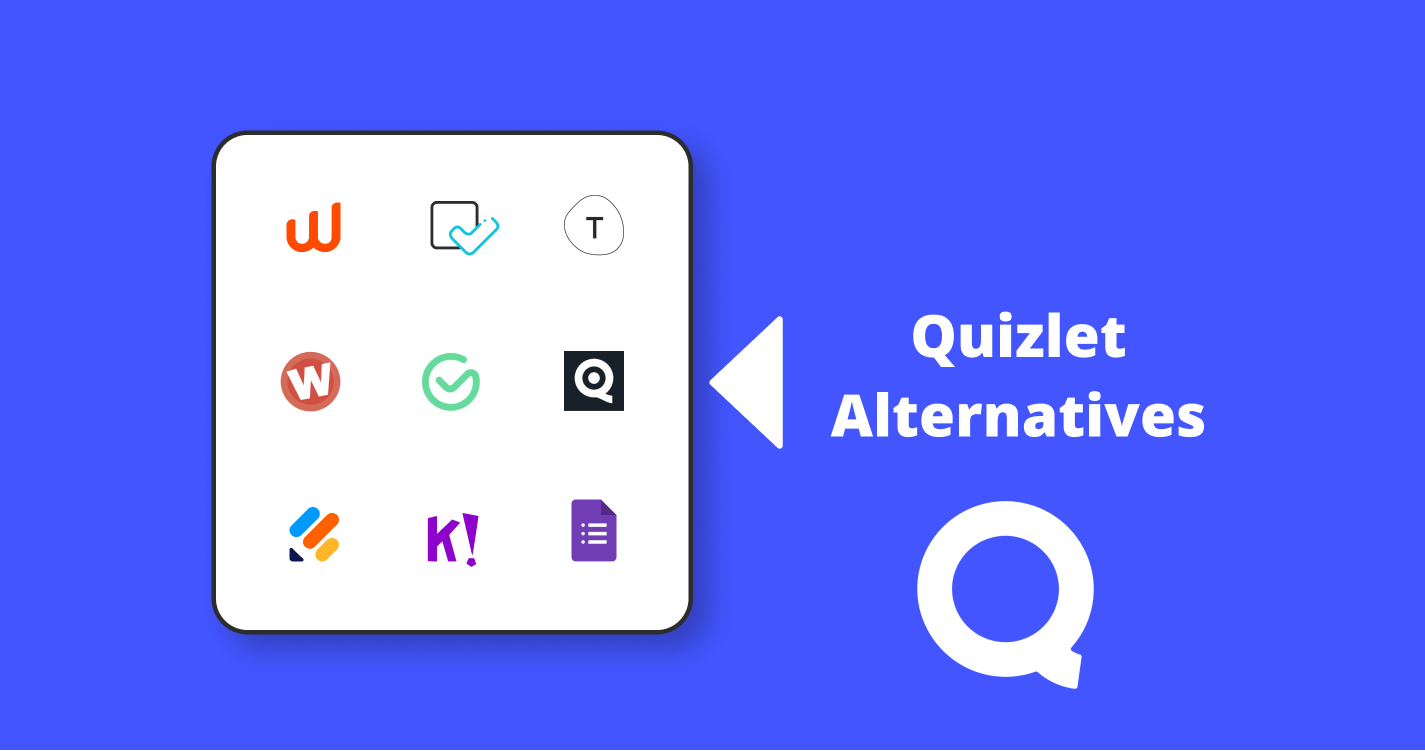
Do you use Quizlet for studying, but find it lacking some features that you need? Or are you simply looking for alternatives to Quizlet? Look no further, as we have compiled a list of the top 10 Quizlet alternatives that will enhance your studying experience.
Quizlet has been quite popular among students for its flashcards, study games, and other study tools. However, with the introduction of fresh and cutting-edge learning platforms, it’s always a good idea to be aware of your other options.
While studying can be rather tedious, it can also be enjoyable and engaging if you have the correct tools and resources. The top 10 Quizlet substitutes have been compiled for your convenience in order to assist you improve your studying process and increase memorization and retention. Get ready to discover a whole new world of studying.
Kahoot:
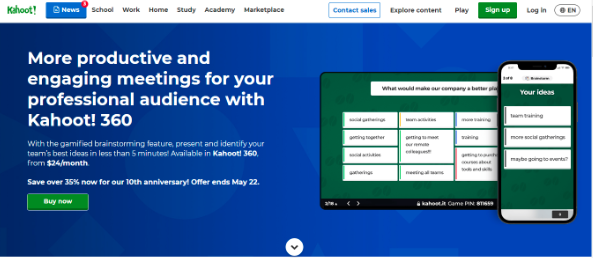
Kahoot is a popular alternative to Quizlet that offers a fun and interactive way for students to learn. This app is used in classrooms worldwide, with over 70 million monthly active users and counting. Kahoot is an engaging platform that allows teachers to create quizzes, games, and assignments. With a user-friendly layout and support for both online and mobile platforms, the app is a great resource for both teachers and students.
Pros:
– Interactive and engaging game-based platform
– Supports multiple-choice, true/false, and short-answer questions
– Customizable quizzes with images and audio
– Integration with other education tools like Google Classroom
– Provides feedback and analytics on students’ performance
Cons:
– Limited question types compared to other education apps
– Free version has limited features
– Learners cannot use Kahoot independently and need a teacher present
Pricing:
Kahoot has a free version with limited features. The premium version, Kahoot! Premium’s cost starts from $17 USD per month when billed annually that offers additional features such as more players per game, advanced reporting, branding, and integrations with learning management systems.
Rating:
Kahoot has an overall rating of 4.7 out of 5 on the Apple App Store and 4.3 out of 5 on the Google Play Store. Teachers and students alike appreciate Kahoot’s easy-to-use interface, engaging games, and useful analytics.
Brainscape:

Brainscape is an effective and innovative study aid that utilizes flashcards to improve memory retention. Developed in 2008 by cognitive scientists, the app provides a personalized learning experience, adapts to every student’s needs, and focuses on reinforcing weaker areas. Brainscape also offers a unique split-screen feature for efficient and quick revisions. In this review, we will examine the app’s features, benefits, and shortcomings to decide if it is a feasible Quizlet alternative.
Pros:
1. Unique Spaced Repetition Algorithm: Brainscape’s smart algorithm schedules flashcards based on the student’s mastery level, improving retention and saving time.
2. Focus on Weaker Areas: The app focuses on weaker areas in the material, continuously adapting to optimize the student’s study experience.
3. Split-Screen Flashcard Revision: The split-screen feature enables students to review contents on one side and the question on the other, improving memory retention and understanding.
4. Wide Range of Subjects: Brainscape covers a wide range of subjects, including standardized tests like the SAT, GMAT, and GRE, and a diverse range of languages.
Cons:
1. Limited Free Features: While Brainscape offers a free app, the free version has limited features and requires a subscription to unlock all the app functionalities.
2. Limited Collaboration: Brainscape has limited collaboration facilities for group work, a feature critical for a study app.
3. Limited User Interface Customization: The app has a relatively straightforward interface, with limited scope for customization.
Pricing:
A stripped-down, free version of the software is available from Brainscape. For $19.99 USD per month or $7.99 USD annually, the premium edition grants access to all of the app’s capabilities, including the capacity to design unique flashcards.
Rating:
Brainscape has a rating of 4.7/5 on the App Store and 4.6/5 on Google Play, reflecting its widespread appeal and usefulness. With its unique algorithm and split-screen feature, Brainscape seems like a competitive Quizlet alternative for students looking to improve their memory retention and learning experience.
Quizizz:
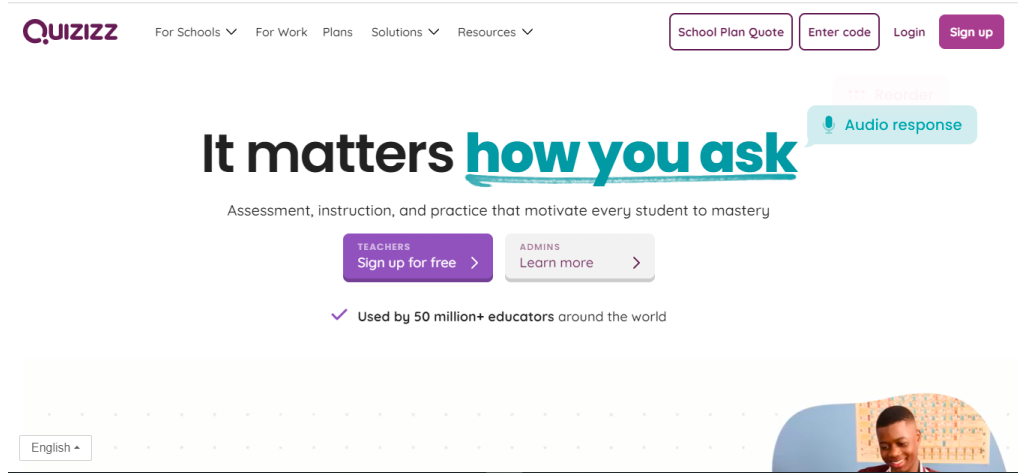
Quizizz is an interactive online quiz platform widely used among teachers and students. It allows teachers to create engaging quizzes with multiple-choice questions, polls, and surveys that are fun and easy for students to use. Students can answer the questions at their own pace and receive instant feedback, making it an excellent tool for classroom assessments and academic competitions. Quizizz is an excellent alternative to Quizlet for teachers looking for an interactive and engaging quiz platform.
Pros:
1. The platform allows for real-time feedback and corrections, helping students learn from their mistakes.
2. The quizzes can be customized to fit the curriculum and made available to students for self-paced learning.
3. Quizizz offers a plethora of gamified features such as memes, emojis, and videos, making it engaging and fun for students to use.
4. Teachers can track their students’ progress and performance, providing them with insights into areas where students might need help.
5. The platform integrates easily with Google Classroom, making it a convenient option for teachers who use the Google ecosystem.
6. Quizizz is mobile-friendly, allowing students to access and complete quizzes from anywhere, on any device.
Cons:
1. The interface may be a bit overwhelming, particularly for users that are not tech-savvy.
2. Some features such as image insertion may not be compatible with all devices.
3. The free version limits the number of quizzes that can be created or taken, which can be a drawback for teachers with large classes.
Pricing:
Quizizz offers a free version, with limited access to features, and a paid version with unlimited features. The paid version pricing is not publicly available and requires contacting Quizizz for a quote.
Rating:
Quizizz has a rating of 4.9 out of 5 stars on G2, an online review platform. It has been praised for its user-friendly and engaging interface, while its limited features in the free version have been the most significant concern raised by reviewers. Nevertheless, users have found Quizizz to be an ideal alternative to Quizlet for making learning fun and interactive.
Also Read: Top 10 Dave App Alternatives
Course Hero:

Students can access a variety of study resources on Course Hero, an online learning platform, including flashcards, practise exams, and study guides. With a sizable database of user-generated content and a growing collection of professionally prepared content, it is one of the most used quizlet alternatives. Unlike quizlet, which is primarily geared towards K-12 students, Course Hero targets college students and offers higher education resources like lecture notes, homework help, and textbook solutions.
Pros:
– Vast database of study materials, with millions of items uploaded by users
– High-quality content, including expertly curated study guides and video tutorials
– Interactive features like flashcards, practice quizzes, and study groups
– Homework help service for fast, personalized assistance
– Flexible subscription options, with both monthly and annual plans available
Cons:
– Expensive pricing for premium membership plans
– Limited access to some features for free users
– Some content may be user-generated, potentially creating inconsistencies in quality
Pricing
Course Hero offers two subscription plans:
– Basic plan: Free access to basic resources, including flashcards, study guides, and practice questions. However, users have limited access to premium features and can only unlock one premium document per month.
– Premier plan: This plan costs $39.99/month or $119.99/year and grants full access to all Course Hero features. Users can access all study materials, get homework help, and download unlimited documents.
Rating
According to Trustpilot, Course Hero has a rating of 2.6/5 based on over 2,001 reviews. Users praise the platform for the vast array of study materials and the quality of content. However, some users complain about the high price of the premier plan and limited access to some features for free users. For students who require individualised help with their schoolwork and college-level study materials, Course Hero is a terrific choice.
GoConqr:
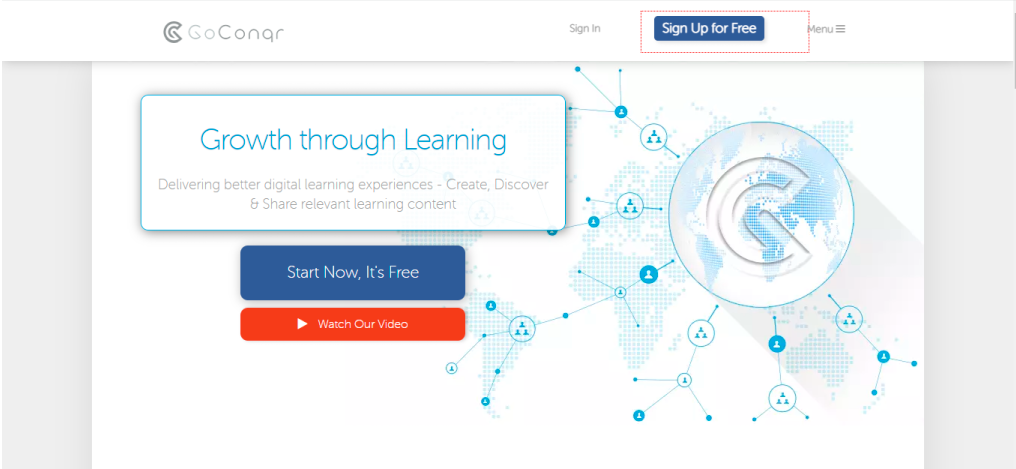
GoConqr is a social network and e-learning platform that lets teachers and students create, share, and find educational content. To facilitate learning and boost academic achievement, the website provides a variety of tools like mind maps, flashcards, quizzes, notes, and slides. GoConqr also provides an engaging and interactive learning experience through its social network feature that allows users to connect and collaborate with others.
Pros:
1. Easy to use and navigate.
2. Offers a wide range of tools for creating learning resources.
3. Ability to share and discover resources among a community of users.
4. Provides an engaging and interactive learning experience through social networking.
5. Users can track their progress and set learning goals.
Cons:
1. Limited functionality compared to other e-learning platforms.
2. The free version has limited features and functionality.
3. Some users may find the interface outdated.
Pricing:
GoConqr offers a freemium pricing model. The free version offers limited features and functionality, while the premium version offers more features and functionality. The premium version starts at $1.42 USD per month paid annually.
Rating:
GoConqr has a rating of 4.4 out of 5 on Capterra, based on 19 reviews. Users praise the platform for its easy-to-use interface, range of learning tools, and social networking features. However, some users note that the free version has limited features and functionality. Overall, GoConqr is a solid alternative to Quizlet, especially for those seeking a social networking element to their e-learning experience.
StudyStack:

Studystack is an online study tool that allows students to create digital flashcards and quizzes. This app is a popular alternative to Quizlet that offers a diverse range of study materials and is completely free to use. Users can access thousands of flashcards or create their own custom sets to study. Flashcards can also be shared with friends and classmates for collaborative studying. With features like audio, images, and different game modes, this app offers a unique and interactive studying experience.
Pros:
– StudyStack is completely free to use.
– It has a large database of pre-made flashcards and quizzes created by other students and teachers.
– Users can create their own custom flashcard sets and quizzes.
– The app offers different game modes like scatter, speller, and crossword to make studying fun and engaging.
– Teachers can use StudyStack to create quizzes and study materials for their students.
Cons:
– The user interface can be confusing for new users.
– Ads are displayed on the app, which can be distracting.
– There is no offline mode, so internet connectivity is required to use the app.
– The app does not currently offer any integration with other educational tools.
Pricing:
StudyStack is completely free to use.
Rating:
Overall, StudyStack is a great alternative to Quizlet with its vast array of study materials and engaging game modes. It has a solid rating of 5 out of 5 stars on the App Store and 4.6 out of 5 stars on Google Play Store. The app is highly recommended for students who prefer interactive studying and want access to thousands of digital flashcards and quizzes for free.
Also Read: Top 10 TikTok Alternatives
Anki:
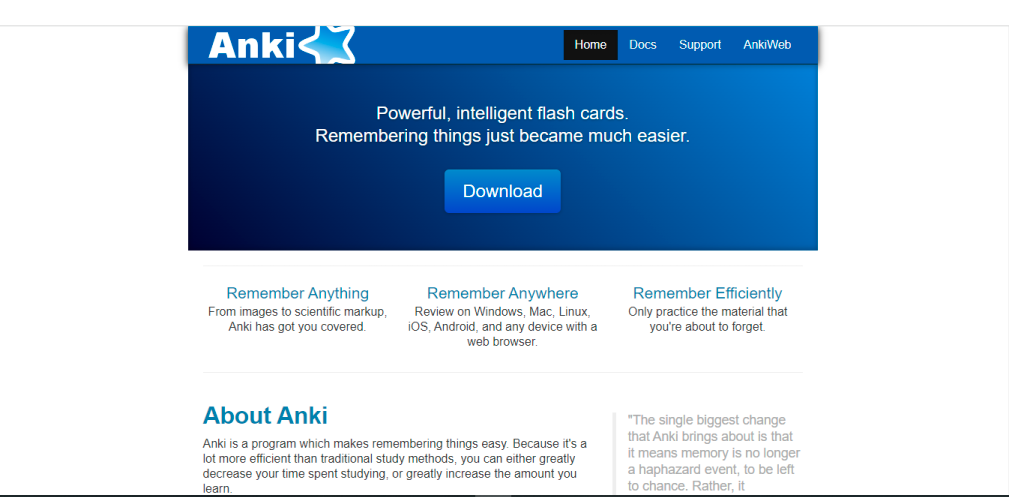
Anki is a free and open-source study app that uses spaced repetition to help users learn and memorize information efficiently. It offers a user-friendly interface and is available for desktop and mobile devices, allowing users to study anytime, anywhere. Anki is a popular alternative to Quizlet due to its advanced learning algorithm and customizable features that cater to individual learning styles.
Pros:
1. Sophisticated spaced repetition algorithm that optimizes learning efficiency
2. Fully customizable with the ability to add images, videos, audio, and LaTeX math notation
3. Supports multiple decks and sub-decks to organize study materials
4. Easy syncing across devices through the AnkiWeb cloud service
5. Free and open-source software with a dedicated user community that creates and shares decks
Cons:
1. Steep learning curve for new users and requires time to adjust to the system
2. Can be overwhelming with too many customizations and features
3. Limited formatting options for text-based cards
4. Does not have a social aspect for sharing decks with others
Pricing:
Anki is completely free to use.
Rating:
Anki has a high rating of 4.1 out of 5 stars on the Apple App Store and 4.4 out of 5 star on the Google Play Store, indicating its effectiveness and usefulness for users.
WordsTool:
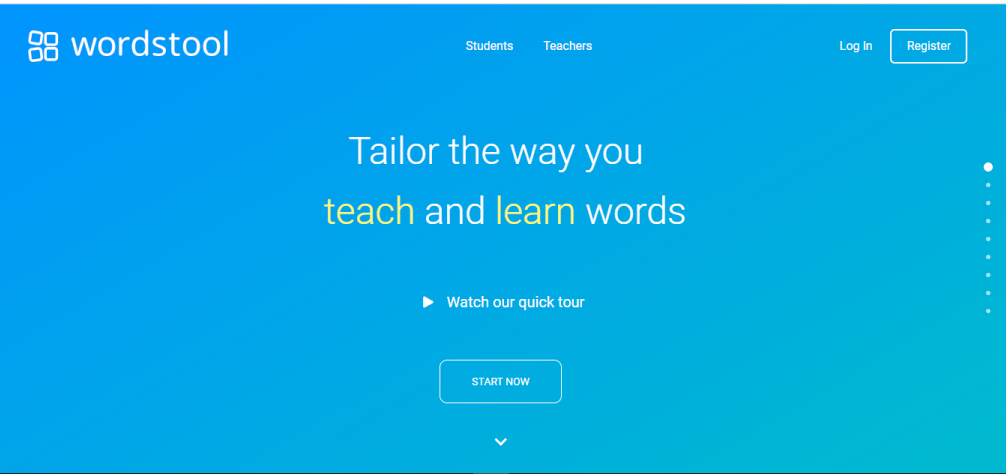
WordsTool is a vocabulary-building app that offers an interactive and progressive way of learning new words. It aims to help users improve their language skills by presenting words in context and providing various exercises for reinforcement. Unlike other flashcard-based apps, WordsTool presents words and phrases in actual sentences, making it more contextual and relatable to real-life scenarios.
Pros:
– Present words and phrases in context to deepen understanding and retention
– Provides various exercises such as typing, matching, and listening activities to reinforce learning
– Offers personalized quizzes to help determine one’s progress and areas for improvement
– Supports multiple languages such as English, Spanish, French, and German
– Has a simple and intuitive user interface, making it easy to navigate for beginners
Cons:
– Limited selection of exercises and quizzes for advanced users
– The free version has limited access to features
– The app is only available on iOS devices
Pricing:
WordsTool offers two pricing options – a free version with limited features, and a premium version which costs $14.99 USD per month or $74.99 per year.
Rating:
WordsTool has an overall rating of 4.1 out of 5 stars on the App Store, with users appreciating the contextual learning approach and various exercises provided for reinforcement. Some users have commented on the limited features on the free version, making the premium version more appealing for serious learners. Compared to Quizlet, WordsTool is less popular but offers a unique approach to language learning that may be more suitable for certain users.
LessonUp:

LessonUp is a popular online learning platform that is gaining popularity as an alternative to Quizlet. It is designed to create interactive and engaging lessons for both teachers and students. The platform combines various features such as video, audio, images, and slides into a single lesson that can be accessed by students from anywhere. Teachers can use the platform to create and share their lessons with their students, while also tracking student performance.
Pros:
1. Provides a great user experience and user interface compared to other e-learning platforms.
2. Offers a vast library of pre-existing lessons that are easy to customize and tailor to individual lessons.
3. Allows teachers to view which students have completed lessons and assign due dates to individual assignments.
4. Provides an extensive range of interactive tools that encourage student engagement.
5. Offers integration with other popular educational tools such as Google Classroom, Microsoft Teams, and Schoology.
Cons:
1. The free version of the platform offers limited features and functionality.
2. Does not provide support for mobile apps which may be a limitation for some users.
3. May take some time to learn the platform before fully utilizing its features.
Pricing:
The platform offers a flexible pricing model for its users. The basic version of the platform is free while the premium version is priced at €6.99 EUR per month, per user. The platform also offers discounts for those who opt for annual subscriptions.
Rating:
The platform has garnered a positive response from users, with a rating of 4.5 stars out of five on popular app review platforms. Users have commended the platform’s ease of use, interactive tools, and extensive library of pre-existing lessons.
Also Read: Top 10 Alternatives To Wordtune
Conclusion
Finding the right study tool is crucial for academic success, and there are several viable alternatives to Quizlet that cater to various learning needs and preferences. It is essential to identify personal learning styles and goals and choose a tool that best supports those objectives. Whether it is through gamified learning, real-time collaboration, or intelligent flashcards, there is a tool out there that can enhance learning outcomes and help students achieve their full potential.
After testing and reviewing Kahoot, We’ve found it to be a great alternative to Quizlet. With its interactive and engaging format, It’s perfect for educators and students who want to collaborate and learn at their own pace. For students who prefer collaborative learning, there is Kahoot, which allows for real-time interaction and group participation through quizzes and games. Duolingo is an excellent alternative for language learners, with a fun and interactive interface and personalized learning paths that adapt to individual needs. Quizalize offers customizable quizzes and surveys to promote active learning and assess student progress. For those who prefer audio-based learning, there is Brainscape, which provides audio-based flashcards and allows users to create their own decks.
- May 4, 2023
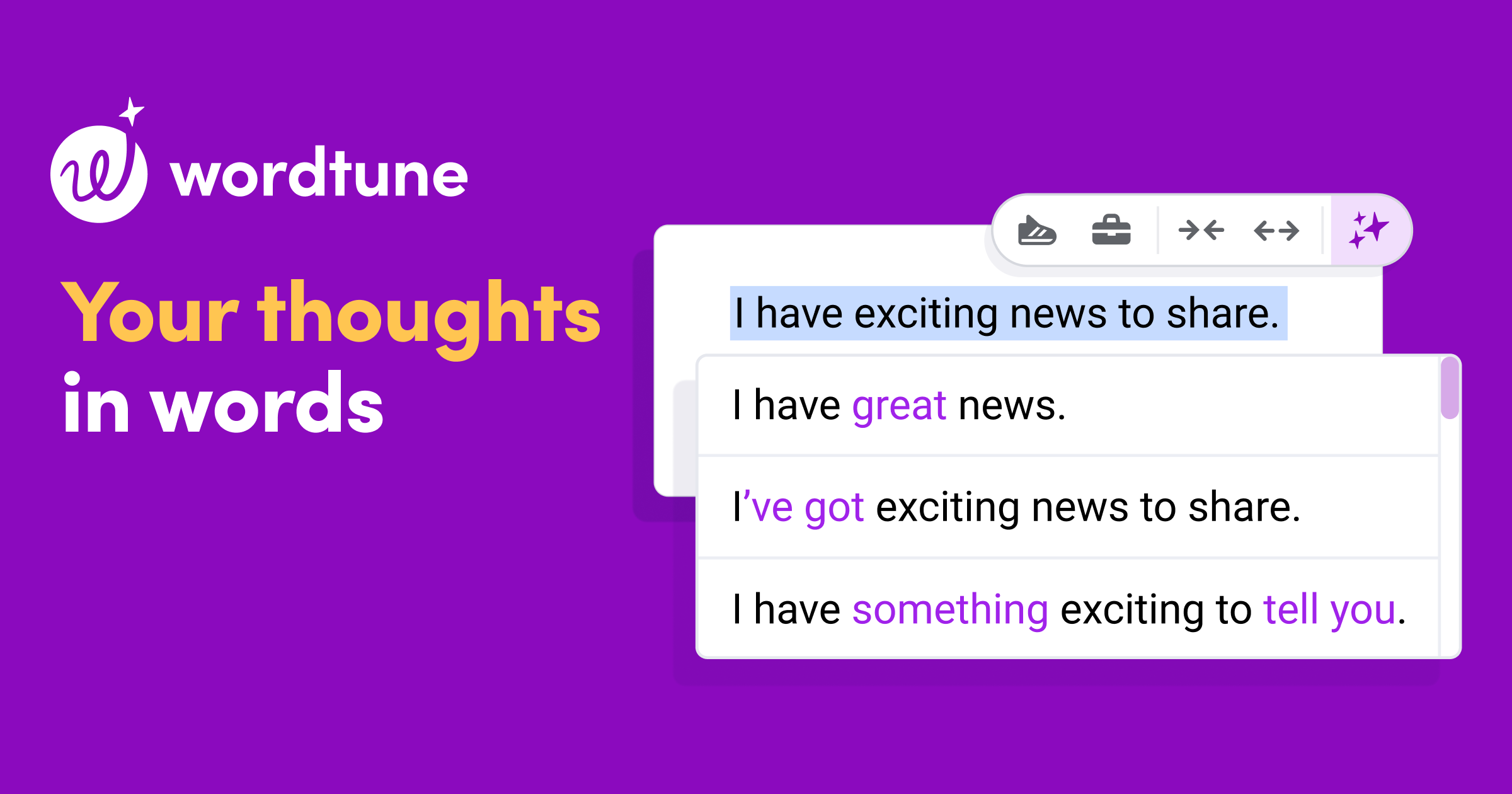
As content creation continues to play a vital role in the online world, writers, bloggers, and marketers alike are always on the lookout for ways to make the process easier, faster, and more efficient. Fortunately, AI-powered writing tools have emerged as an effective solution to the challenges that come with creating high-quality content. These tools leverage the power of artificial intelligence to help writers generate better sentences, paragraphs, and even entire documents.
One such AI-powered writing tool is Wordtune, but there are several other great options available in the market. In this blog post, we’ll be exploring the top 10 exceptional AI-driven writing tools that serve as alternatives to Wordtune. From pricing to features and ratings, we’ll be comparing and contrasting these writing tools to help you choose the one that best fits your content creation needs. So, whether you’re a freelance writer drafting your next piece or looking to streamline your workflow with a freelance agreement template, a content marketer, or a blogger, read on to discover the top AI-driven writing tools that can help improve your writing game.
Below are the top 10 AI-driven writing tools that serve as excellent alternatives to Wordtune:
Top Wordtune Alternatives in 2024
Grammarly:

Grammarly is an AI-powered writing assistant that helps you with grammar, spelling, punctuation, and style. With millions of users worldwide, Grammarly has become a popular tool in the writing world. It offers a variety of features that improve the clarity, fluency, and tone of written texts, making it an excellent alternative to traditional proofreading methods. It’s available as a web app, desktop app, and browser extension, and can be used across a variety of platforms. It offers suggestions and corrections for your writing in real-time, and also includes a plagiarism checker and a tone detector to ensure that your writing is clear, concise, and effective.
Here’s a review of its pros and cons, pricing, and rating.
Pros:
- Grammarly offers a robust set of writing tools that can help you improve your writing skills significantly.
- Its advanced algorithms can detect even complex grammar and spelling errors, making it a helpful tool for writers of all levels.
- The tool’s suggestions for sentence structure, word choice, and tone can help improve the overall quality and readability of your writing.
- The browser extension makes it easy to use Grammarly on any website, including social media and email platforms.
- The tool also has a free version that offers basic grammar and spelling checks, which is useful for those on a tight budget.
Cons:
- The premium version can be costly, especially for those who are just starting their writing careers.
- Some users have reported that the tool’s suggestions can be too rigid, and that it doesn’t always take into account the context of the writing.
- While the plagiarism detection feature is useful, it’s not foolproof, and some users have reported false positives.
Pricing:
Grammarly offers a free version of its writing assistant tool that includes basic grammar and spelling checks. However, the Premium version starts from $12.00 USD/ month, which includes
Rating:
Overall, Grammarly is an excellent writing assistant tool that can help improve the quality of your writing. It has a 4.6-star rating on Trustpilot, with many users praising its ease of use and effectiveness in catching errors. However, some users have reported issues with its rigid suggestions and the cost of the premium version.
Jasper:
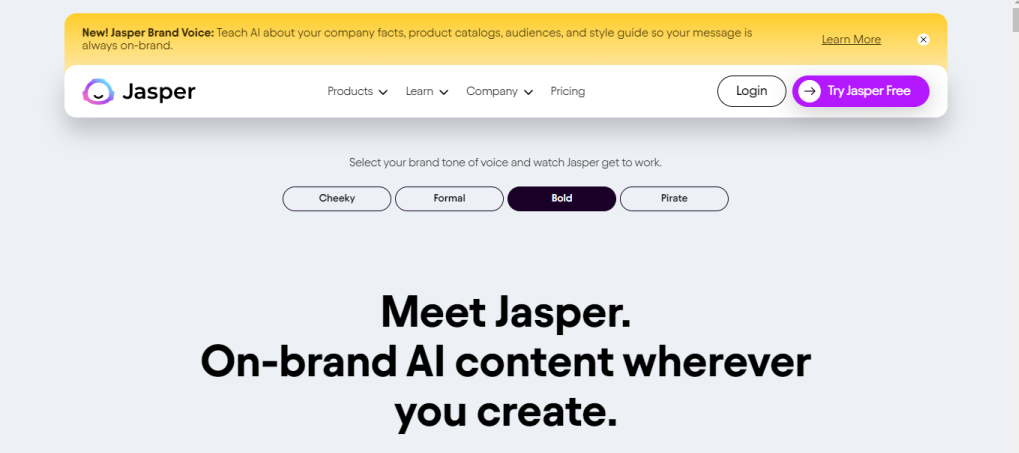
Jasper is an AI-powered writing assistant that helps you with content creation and copywriting. It uses advanced natural language processing algorithms to generate content that’s optimized for search engines and user engagement. Jasper offers a variety of templates and tools to help you create high-quality content quickly and easily.
Here’s a review of its pros and cons, pricing, and rating.
Pros:
Jasper’s AI algorithms can analyze your writing and provide helpful suggestions to improve grammar, style, and tone.
The tool offers contextual suggestions that take into account the meaning and context of the words you’ve written, making it a valuable tool for improving sentence structure and overall readability.
Jasper also provides real-time feedback, making it a useful tool for writers who want to improve their writing skills quickly.
The tool integrates with popular writing platforms, including Google Docs and Microsoft Word, making it easy to use with your existing workflow.
Cons:
The tool’s pricing can be quite high, especially for those on a tight budget.
Some users have reported that the tool’s suggestions can be overly aggressive, which can lead to changes that don’t fit with the writer’s original intent.
Jasper’s AI is not perfect, and it may not always provide the most accurate suggestions for improving your writing.
Pricing:
Jasper offers a range of pricing plans, starting at $49 USD per month for the Basic plan, which includes basic writing suggestions and analysis. The Pro plan, $125 USD per month, which includes advanced writing suggestions and contextual analysis. Custom plans are also available for enterprise customers.
Rating:
Jasper has a 4.7-star rating on G2, with many users praising its advanced AI algorithms and ease of use. However, some users have reported issues with the tool’s pricing and overly aggressive suggestions. Overall, Jasper is a powerful writing assistant tool that can help improve your writing skills significantly, but it may not be the best fit for everyone.
Frase.io:

Frase.io is an AI-powered content optimization tool that can help users improve the quality and relevance of their content. It offers features like topic clustering, SEO optimization, and content briefs to help users create content that resonates with their audience. If you’re looking for professional SEO services, Frase.io is a valuable tool to consider. Here’s a review of its pros and cons, and pricing.
Here’s a review of its pros and cons, and pricing.
Pros:
- Frase.io uses AI to analyze and organize content topics, making it easy for users to identify the most relevant keywords and topics for their content.
- The tool offers SEO optimization features like SERP tracking and keyword research, which can help users improve their website’s search engine ranking.
- Frase.io’s content briefs feature provides users with a detailed outline of the content they need to create, including keywords, topics, and recommended sources.
- The tool’s integration with popular headless CMS platforms like WordPress, HubSpot, and headless CMS platforms makes it easy for users to incorporate it into their content creation process.
Cons:
- Frase.io’s pricing can be expensive for those on a tight budget, especially if you need to use it frequently.
- The tool’s accuracy can vary, and users may need to edit or refine the output to achieve the desired result.
- Frase.io’s interface can be complex and overwhelming for new users, and it may take time to learn how to use all of its features effectively.
Pricing:
– Frase.io offers a range of pricing plans, starting at $14.99 USD per month which is a solo plan and $44.99 USD for the Basic plan. The Business plan, which includes more advanced features like content briefs and SEO optimization, costs $114.99 USD per month. Custom plans are also available for enterprise customers.
Rating:
Frase.io has a 4.9 rating on G2, with 284 users praising its range of features and the quality of the SEO analysis. However, some users have noted that the pricing is more expensive compared to some of the other alternatives. Overall, Frase.io is a solid alternative to Wordtune that offers content creators a range of tools to optimize their content for SEO and relevance.
Copy.ai:
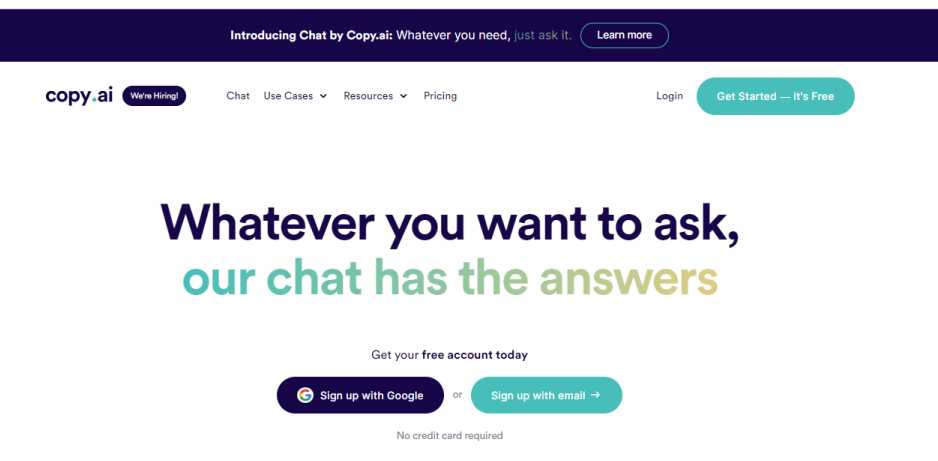
Copy.ai is an AI-powered writing assistant that helps you with content creation and copywriting. It uses GPT-3 technology to generate high-quality copy for ads, social media, blogs, and more. Copy.ai also offers a variety of templates and tools to help you create content quickly and easily.
Here’s a review of its pros and cons, pricing, and rating.
Pros:
- Copy.ai uses advanced AI algorithms to generate high-quality content quickly, which can save time and effort for writers.
- The tool offers a range of writing templates that can help users get started on writing projects quickly and efficiently.
- Copy.ai’s interface is user-friendly, making it easy to use even for those who are not technically inclined.
- The tool’s content suggestions are diverse and can help users create unique and engaging content.
Cons:
- Copy.ai’s pricing can be quite high for those on a tight budget, especially if you need to generate a lot of content.
- The generated content may not always be of the highest quality, and it may require editing to meet the user’s standards.
- The tool’s AI algorithms are not perfect, and some users have reported that the suggestions can be repetitive or irrelevant to their needs.
Pricing:
Copy.ai offers a range of pricing plans, starting at $36 USD per month for the Starter plan, which includes unlimited words of content generation per month. Custom plans are also available for enterprise customers.
Rating:
Copy.ai has a 4.8-star rating on G2, with many users praising its ease of use and ability to generate high-quality content quickly. However, some users have reported issues with the tool’s pricing and occasional low-quality content suggestions. Overall, Copy.ai is a powerful tool that can help writers generate content quickly and efficiently, but it may not be the best fit for everyone.
Rytr:
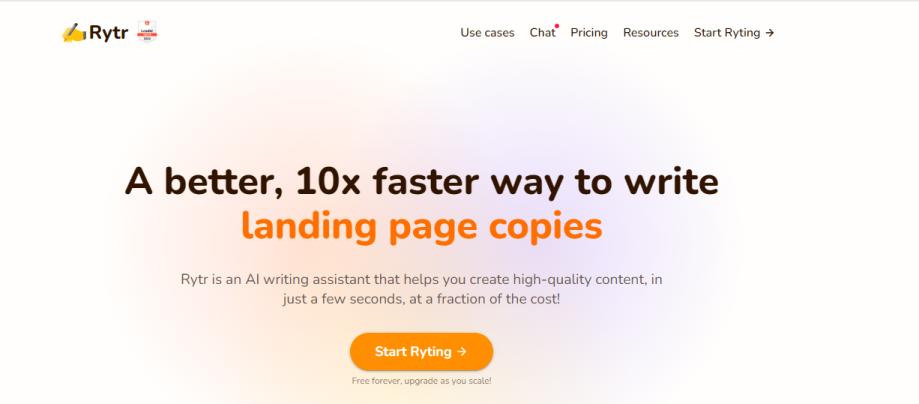
Product Paragraph: Rytr is an AI-powered writing assistant that helps you with content creation and copywriting. It uses GPT-3 technology to generate high-quality copy for ads, social media, blogs, and more. Rytr offers a variety of templates and tools to help you create content quickly and easily.
Pros:
- Rytr uses advanced AI algorithms to generate high-quality content quickly, which can save time and effort for writers.
- The tool offers a range of writing prompts and templates that can help users get started on writing projects quickly and efficiently.
- Rytr’s interface is user-friendly, making it easy to use even for those who are not technically inclined.
- The tool’s content suggestions are diverse and can help users create unique and engaging content.
Cons:
- Rytr’s pricing can be quite high for those on a tight budget, especially if you need to generate a lot of content.
- The generated content may not always be of the highest quality, and it may require editing to meet the user’s standards.
- The tool’s AI algorithms are not perfect, and some users have reported that the suggestions can be repetitive or irrelevant to their needs.
Pricing:
Rytr offers a range of pricing plans, starting at $9 USD per month for the Basic plan. The Pro plan, which includes unlimited characters of content generation and more advanced features, costs $29 USD per month. Custom plans are also available for enterprise customers.
Rating:
Rytr has a 4.7-star rating on G2, with many users praising its ability to generate high-quality content quickly and efficiently. However, some users have reported issues with the tool’s pricing and occasional low-quality content suggestions. Overall, Rytr is a powerful writing assistant tool that can help writers create content quickly and efficiently, but it may not be the best fit for everyone.
Writesonic:

Writesonic is an AI-powered writing tool that can help users generate high-quality content for a range of purposes, including blog posts, ads, social media content, and more. It offers a range of features, including content generation, copywriting assistance, and content optimization. Here’s a review of its pros and cons, pricing, and rating.
Pros:
- Writesonic uses advanced AI algorithms to generate high-quality content quickly, which can save time and effort for writers.
- The tool offers a range of writing templates and frameworks that can help users get started on writing projects quickly and efficiently.
- Writesonic’s interface is user-friendly and intuitive, making it easy to use even for those who are not technically inclined.
- The tool’s content suggestions are diverse and can help users create unique and engaging content.
Cons:
- Writesonic’s pricing can be quite high for those on a tight budget, especially if you need to generate a lot of content.
- The generated content may not always be of the highest quality, and it may require editing to meet the user’s standards.
- The tool’s AI algorithms are not perfect, and some users have reported that the suggestions can be repetitive or irrelevant to their needs.
Pricing:
Writesonic offers a range of pricing plans, The Professional plan starting at $12.67 per month for the Starter plan, which includes 60,000 words content generations. which includes 400 content generations and more advanced features. Custom plans are also available for enterprise customers.
Rating:
Writesonic has a 4.7-star rating on G2, with many users praising its ability to generate high-quality content quickly and efficiently. However, some users have reported issues with the tool’s pricing and occasional low-quality content suggestions. Overall, Writesonic is a powerful writing tool that can help writers create content quickly and efficiently, but it may not be the best fit for everyone.
Quillbot:
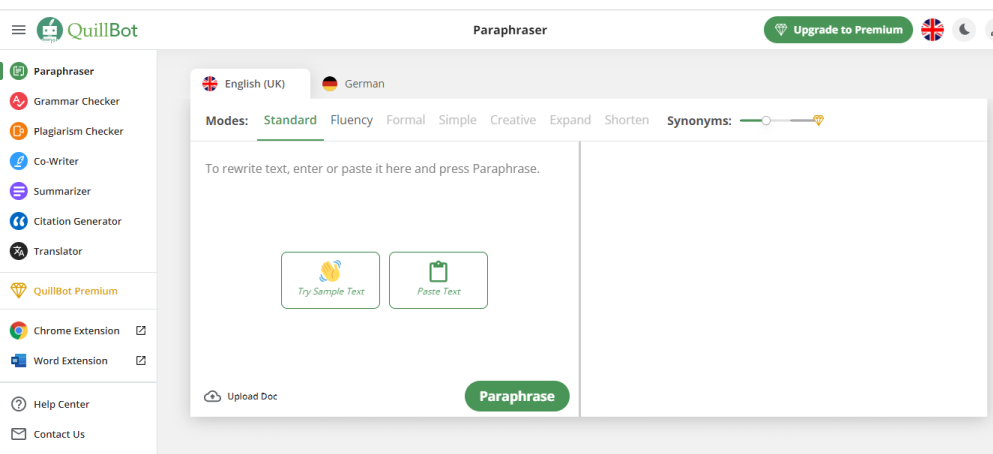
Quillbot is an AI-based paraphrasing tool that can help users rewrite their text with different levels of creativity, formality, and simplicity. It offers a range of features, including sentence rephrasing, thesaurus suggestions, and plagiarism checking.
Here’s a review of its pros and cons, and pricing.
Pros:
- Quillbot’s AI algorithms are powerful and can rephrase text quickly and accurately, which can save time and effort for writers.
- The tool offers a range of customization options, such as the level of creativity, formality, and simplicity, which can help users tailor their writing to their audience and purpose.
- Quillbot’s interface is user-friendly and intuitive, making it easy to use for writers of all levels.
- The tool’s plagiarism checking feature can help users ensure that their text is original and free of plagiarism.
Cons:
- Quillbot’s paraphrasing can sometimes produce awkward or confusing sentences that require additional editing.
- The tool’s customization options are limited, and users may not be able to achieve the level of customization they desire.
- The tool’s pricing can be high for those on a tight budget, especially if you need to use it frequently.
Pricing:
Quillbot offers a range of pricing plans, starting at $9.95 USD per month billed monthly and $4.17 USD per month billed Annually. Custom plans are also available for enterprise customers.
Rating:
Quillbot has a 4.6 rating on Capterra, with 111 users praising its range of features and ease of use. However, some users have noted that the suggestions provided can be inaccurate or not make sense in the context of the writing. Overall, Quillbot is a solid alternative to Wordtune that offers users a range of writing tools to improve their content creation.
WordAI:

WordAI is an AI-powered article spinner that can help users generate unique content by rewriting existing content. It offers advanced features like natural language processing, deep learning, and machine learning algorithms. Here’s a review of its pros and cons, and pricing.
Pros:
- WordAI uses advanced natural language processing and machine learning algorithms to rewrite content that is grammatically correct and flows well.
- The tool can generate human-like content that is unique and engaging, which can save time for writers who need to produce a large amount of content.
- WordAI’s interface is user-friendly and easy to use, making it accessible to writers of all levels.
- The tool’s API integration allows it to be used with other applications or platforms.
Cons:
- WordAI’s pricing can be expensive for those on a tight budget, especially if you need to use it frequently.
- The tool’s accuracy can vary, and users may need to edit or refine the output to achieve the desired result.
- WordAI’s content can sometimes sound robotic or generic, lacking the nuance and creativity of human writing.
Pricing:
WordAI offers a range of pricing plans, starting at $57 USD per month billed monthly and $27 USD per month billed yearly for the Standard plan, which includes advanced features like Natural Language Analysis and AI Spinner. Custom plans are also available for enterprise customers.
Rating:
WordAI has a 4.2/5 rating on G2, with 17 users praising its range of features and the quality of the generated content. However, some users have noted that the user interface can be overwhelming and the pricing is more expensive compared to some of the other alternatives. Overall, WordAI is a solid alternative to Wordtune that offers content creators a range of tools to generate high-quality, unique content.
Linguix:
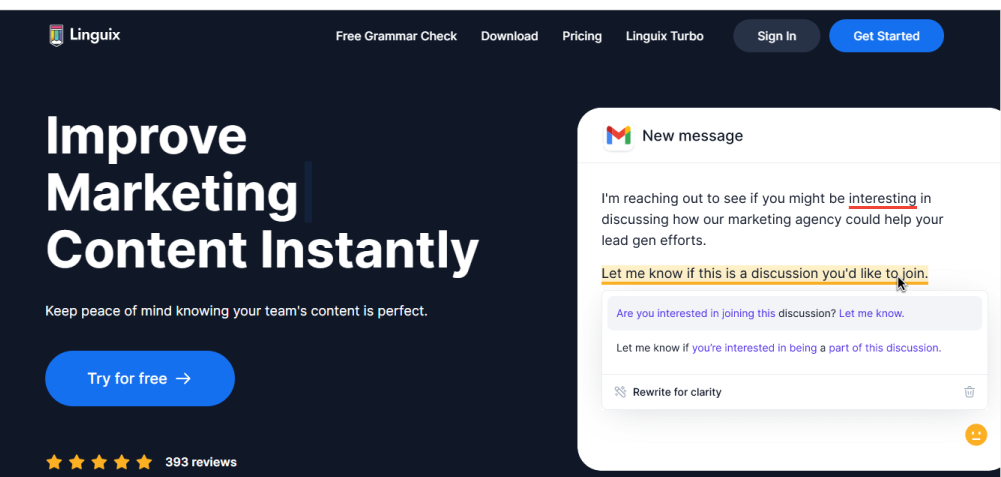
Linguix is an AI-powered writing assistant that helps users improve their writing skills by offering suggestions for grammar, spelling, punctuation, and style. It offers an intuitive interface that integrates with web browsers, text editors, and other writing platforms, making it convenient to use.
Pros:
- Offers a comprehensive suite of writing tools, including a built-in thesaurus, readability analysis, and personalized suggestions.
- Offers a free version with limited features, as well as a paid version with more advanced features, such as plagiarism checks and custom goals.
- Offers extensions for popular web browsers like Google Chrome and Mozilla Firefox, allowing users to access its features across the web.
- Supports multiple languages, making it ideal for non-native English speakers.
Cons:
- The free version is limited in features and may not be sufficient for more advanced writing needs.
- Some users may find the interface overwhelming and confusing at first.
- The plagiarism checker is only available in the paid version.
Pricing:
Linguix offers a free version with limited features, as well as a paid version that starts at $5 USD/month (when billed annually) The paid version includes additional features such as plagiarism checks, custom goals, and more advanced writing suggestions. Custom plans are also available for enterprise customers.
Rating:
Linguix has a 4.5 rating on G2, with 123 users praising its comprehensive set of writing tools and ease of use. Some users have noted that the free version is limited in features and that the interface can be overwhelming. However, overall, Linguix is a well-regarded alternative to Wordtune that can help users improve their writing skills.
WhiteSmoke:
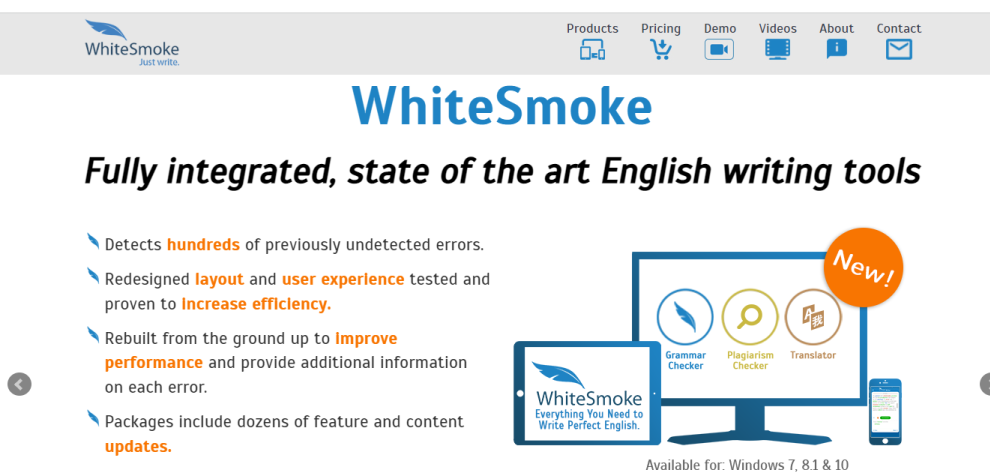
WhiteSmoke is an AI-powered writing tool that offers users suggestions to improve their grammar, spelling, and writing style. It offers a range of features such as grammar checker, translator, and writing templates to assist users in writing effectively.
Pros:
- Offers a comprehensive set of writing tools including grammar and spelling check, plagiarism checker, translator, and more.
- Easy to use interface with the option to integrate with a range of writing platforms including Microsoft Word, Google Docs, and web browsers.
- Offers multiple pricing plans including monthly and yearly subscription options, making it more flexible for users with different budgets.
Cons:
- The software can be slower compared to some of its competitors.
- Some users have reported issues with the accuracy of the grammar and spelling checker.
- The pricing is slightly more expensive than some of the other alternatives.
Pricing:
WhiteSmoke offers multiple pricing plans including monthly and yearly subscriptions. Monthly plans start at $5.00 USD /month, billed yearly. The premium plan starts at $6.66 USD /month when billed annually.
Rating:
WhiteSmoke has a 4.6 rating on G2, with 10 users praising its range of features and ease of use. However, some users have noted that the accuracy of the grammar and spelling checker can be improved. Overall, WhiteSmoke is a solid alternative to Wordtune that offers users a range of writing tools to improve their writing skills.
Rephrase:

Rephrase is an AI-powered paraphrasing tool that is a good alternative to Wordtune. With its expansive paraphrasing capabilities you can make your content look unique, easier to read, and engaging. It has advanced AI algorithms such as NLP and machine learning that contribute to its amazing performance. Here are its pros and cons and pricing.
Pros:
Rephrase produces human-like results that are easy to read and understand.
Rephrase produces an output in very little time, typically in the span of a few seconds. This helps writers to save time when rephrasing their content.
It has multiple rephrasing modes that provide different outputs for the user. Writers can use different modes to paraphrase their content and make it suitable for different uses.
Its API allows you to integrate it with other tools and platforms to enhance or extend their functionality.
It supports upwards of 10 languages for paraphrasing.
Cons:
Free users have to deal with a lot of advertisements.
It has quite a limited word count for both free and paid users.
Pricing:
Rephrase has an affordable plan that starts at $7 USD per week that is aimed at students and people who only want to try the premium features. There are two other plans that are $20 USD per month, and $150 USD per year. They all offer the same features of unlocking the premium modes and increasing the word limit.
Rating:
Rephrase has a rating of 4/5 on G2 and has one customer praising how easy it is to use and that it creates plagiarism free content. However, the same user has also commented on the small word limit is really limiting specifically for free users. In the end, it can be seen that Rephrase is a good alternative to Wordtune due to its paraphrasing capabilities and range of modes.
Conclusion
If you’re looking to up your writing game and take it to the next level, look no further than these exceptional AI-driven writing tools! With their powerful and innovative features, they offer a wide range of alternatives to WordTune that can help you craft engaging, error-free content that resonates with your audience. So why wait? Give these writing tools a try and see for yourself how they can transform the way you write!

